Al Goldner Daylily Collection
The 51 Hemerocallis selections below make up the Al Goldner Daylily Collection in the Garden.
The 51 Hemerocallis selections below make up the Al Goldner Daylily Collection in the Garden.
Hemerocallis "Adeline Goldner"
Al Goldner named this hybrid for his mother and registered this long-blooming landscape industry favorite in 1987. A tetraploid has 91 cm (36-inch) scapes with 21.5 cm (8.5-inch) blooms. The American Hemerocallis Society (AHS) calls it "spiderlike" in form. A true "spider" has petals four times longer than wide. It is a golden yellow self. Though a "self" denotes a monochromatic color pattern, it can have a different-colored throat and a pale midrib, but no other markings.
2007 AHS Honorable Mention Award Winner
Registered with the American Daylily Society in 1987 (Goldner)

Hemerocallis "Alice Burlingame"
Al Goldner named this cultivar for his friend, Alice W. Burlingame—MSU professor, founder of the American Horticultural Therapy Association, and the co-author of Therapy Through Horticulture, the foundational book leading to the development of horticultural therapy as a distinct profession. The 6-inch (15 cm) flowers are a red-pink-orange blend with yellow-cream midribs. The flowers and buds are borne on scapes 91 to 122 cm (36 to 48 inches). It is a mid-late season bloomer.
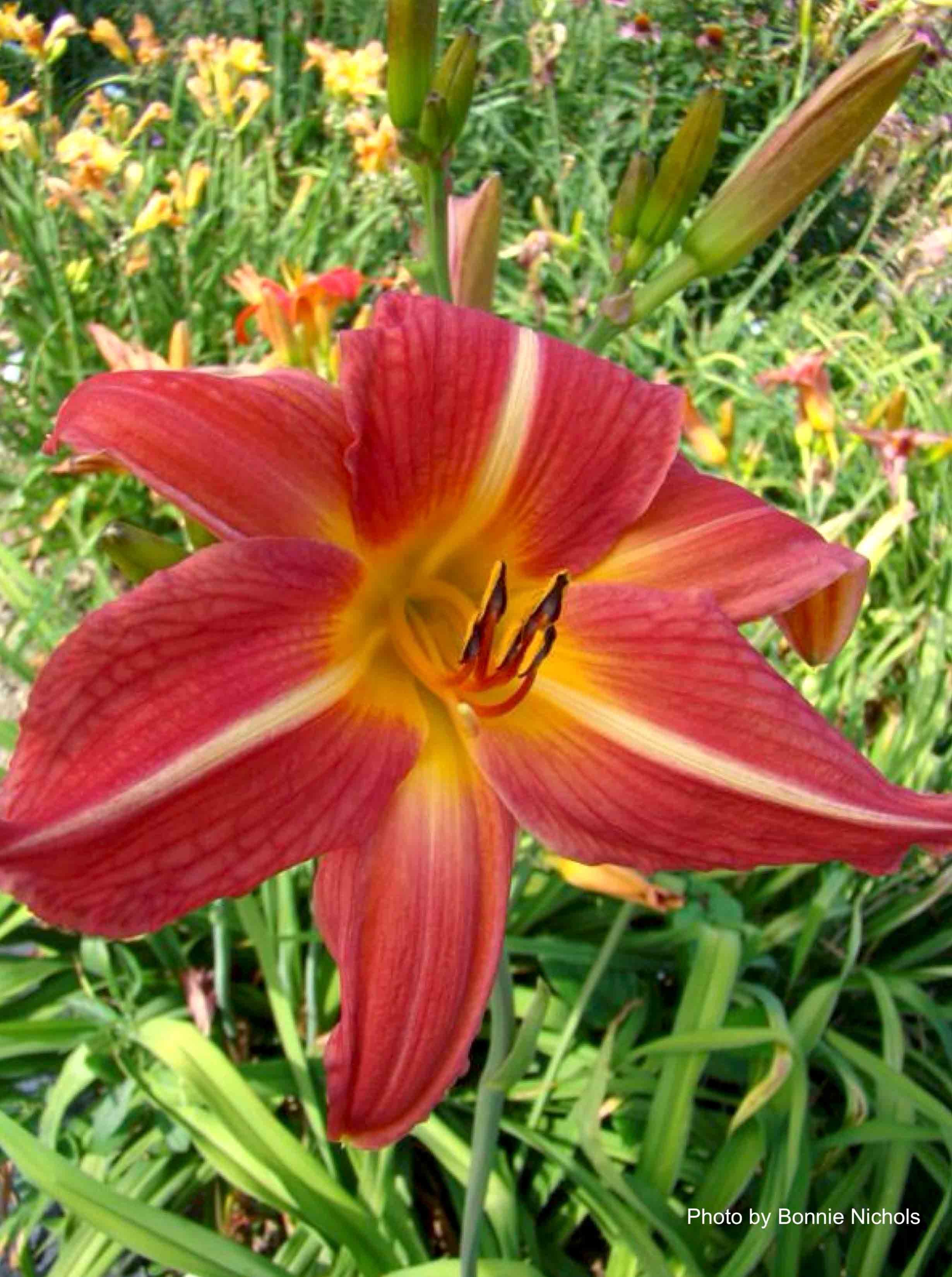
Hemerocallis "Alice Wiegand"
Named after the co-founder of Ray Wiegand’s Nursery in Macomb, Michigan, this plant has 15 cm (6-inch) flowers on 94 cm (37-inch) scapes. The blooms are a light pink-peach with a wine-colored eyezone and a green throat. The petals are somewhat recurved and have a wine-colored, ruffled edge. At Beal Garden, it is a prolific early bloomer that reblooms in late August.
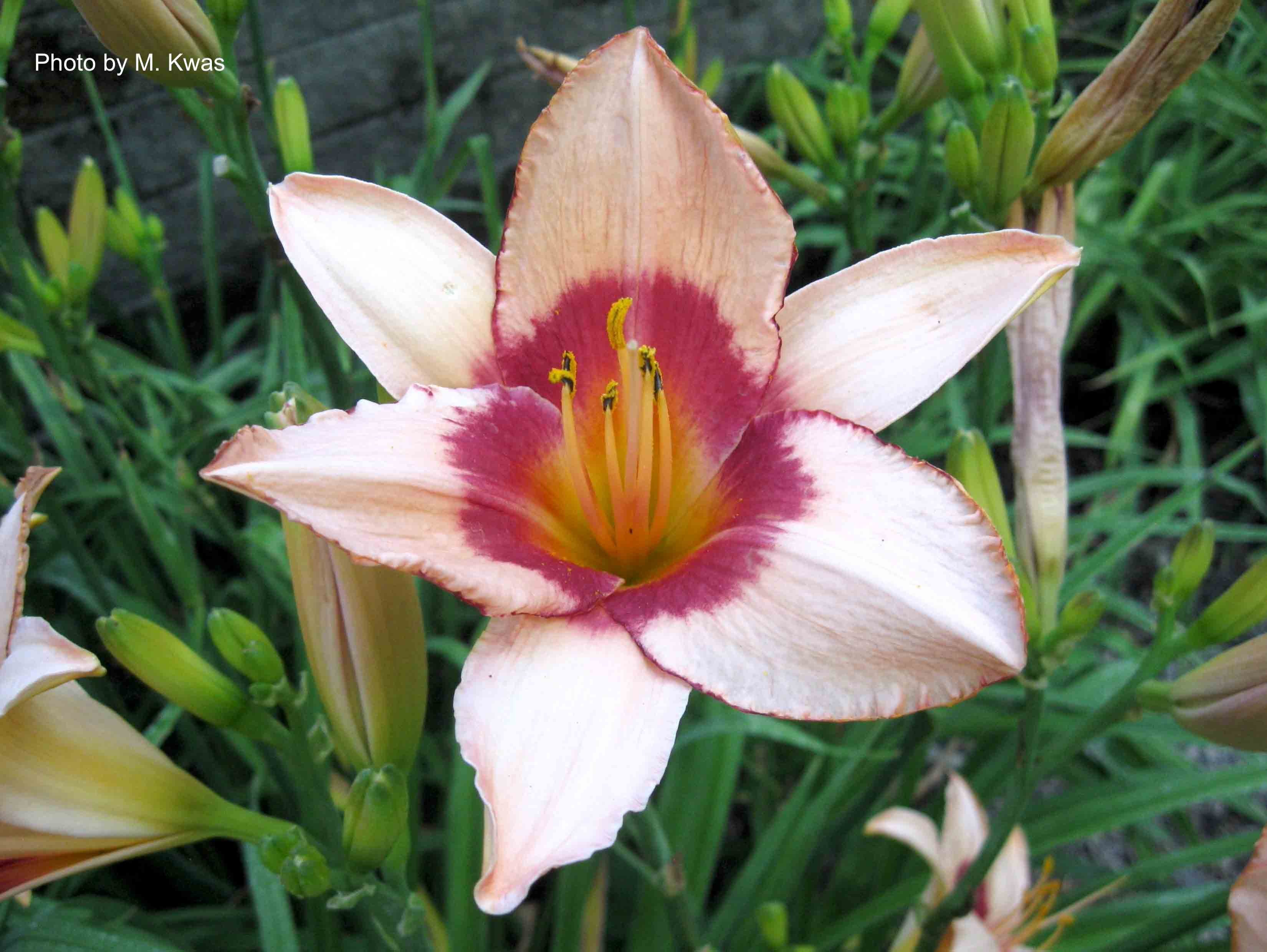
Hemerocallis "Amelia Musser"
Goldner named this daylily after the co-owner (with husband Dan) of the Grand Hotel on Mackinac Island. It is a heavy blooming plant with 7-inch (18 cm) lemon-yellow flowers that are lightly fragrant. "Amelia Musser" stands about 91 cm (36 inches) tall and begins to bloom in midseason. This tetraploid hybrid was registered with the American Daylily Society by Al Goldner in 1989.
Registered with the American Daylily Society in 1989 (Goldner)
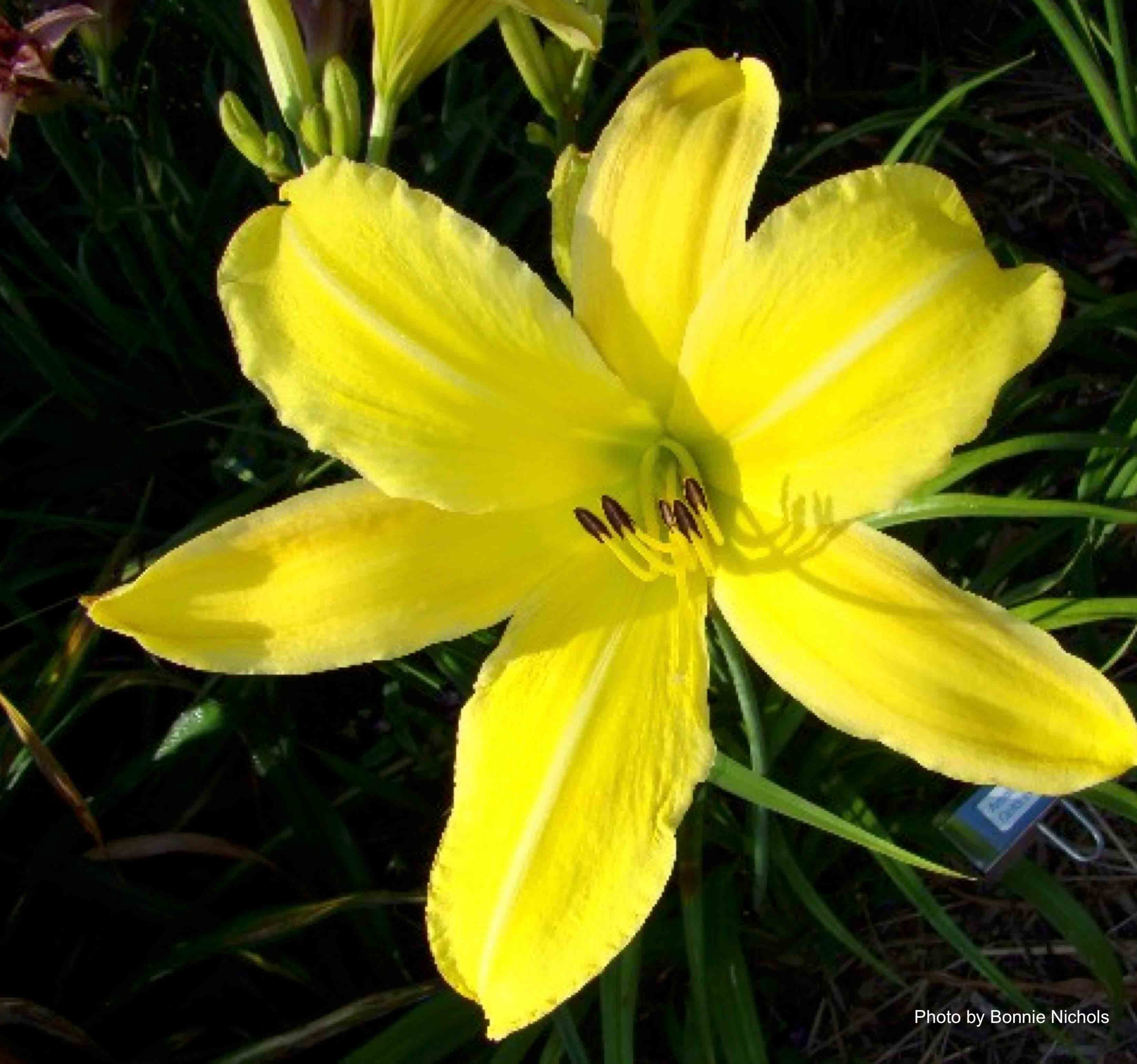
Hemerocallis "Arthur Malone"
Standing 91 cm (36 inches) tall, the 6-inch (15 cm) flowers of this cultivar are pale raspberry with a wide yellow-gold throat. These large flowers characterized one of the traits Al Goldner targeted in his breeding program. The petals and sepals are heavily striated. Arthur Malone was one of Goldner’s co-workers while he worked as the plant buyer for Hudson’s department store in Detroit. "Arthur Malone" is a mid-late season bloomer.

Hemerocallis "Aswan"
This early-midseason cultivar is registered as a chartreuse self, i.e., the coloration is uniformly chartreuse. "Aswan" is one of Goldner’s shorter daylilies, typically standing about 51 cm (20 inches) tall, with 6-inch (15 cm) flowers.
Registered with the American Daylily Society in 1979 (Goldner)
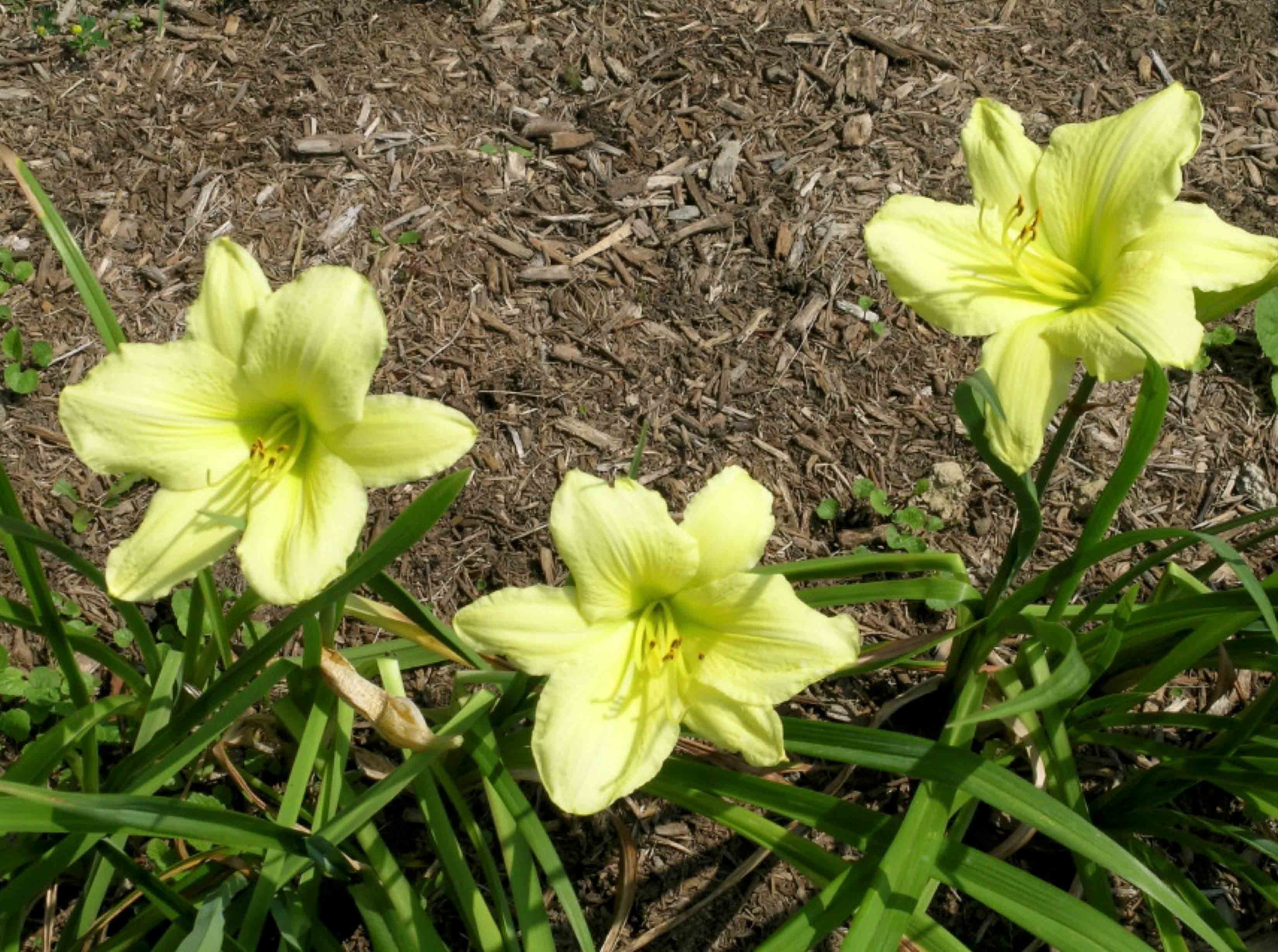
Hemerocallis "Baby Smiles"
The slightly ruffled petals are cream-peach with a pink eye; the sepals lack the pink eye and are not ruffled. This plant is about 53 cm (21 inches) tall, with flowers about 14 cm (5.5 inches) in diameter. At Beal Garden, this cultivar begins to bloom in early July and is mid-bloom by mid-July, one of the shortest daylily blooms in the collection.
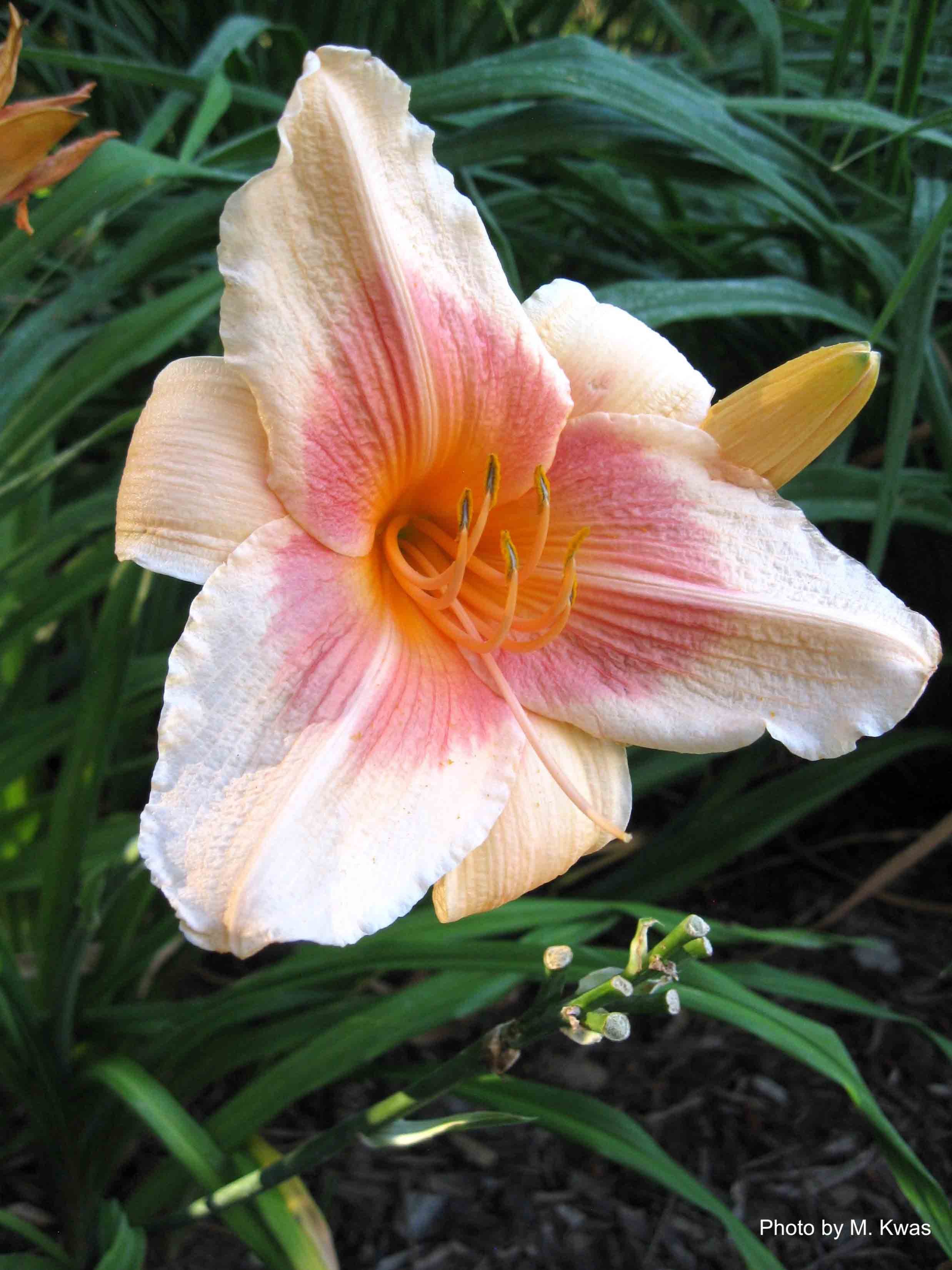
Hemerocallis "Back to School"
Al Goldner reported that this cultivar occasionally bloomed into October. It stands about 64 cm (25 inches) tall, and the flowers are 14 cm (5.5 inches) in diameter. The recurved, striated petals are a dark velvet red, with a darker maroon band and an orange-yellow throat. This hybrid will require a different name for registration with the American Hemerocallis Society, as there already is a different "Back to School" daylily registered by Sobek in 2003. This daylily blooms from the end of July until possibly early September.

Hemerocallis "Bill Barrere"
A mid-late season bloomer standing 76 cm (30 inches) tall, this Goldner cultivar has 5.5-inch (14 cm) reddish-orange flowers with a light yellow eye and midribs. Bill Barrere was a northern Ohio hybridizer who provided Al Goldner with several seedlings that Al used in his own breeding program.
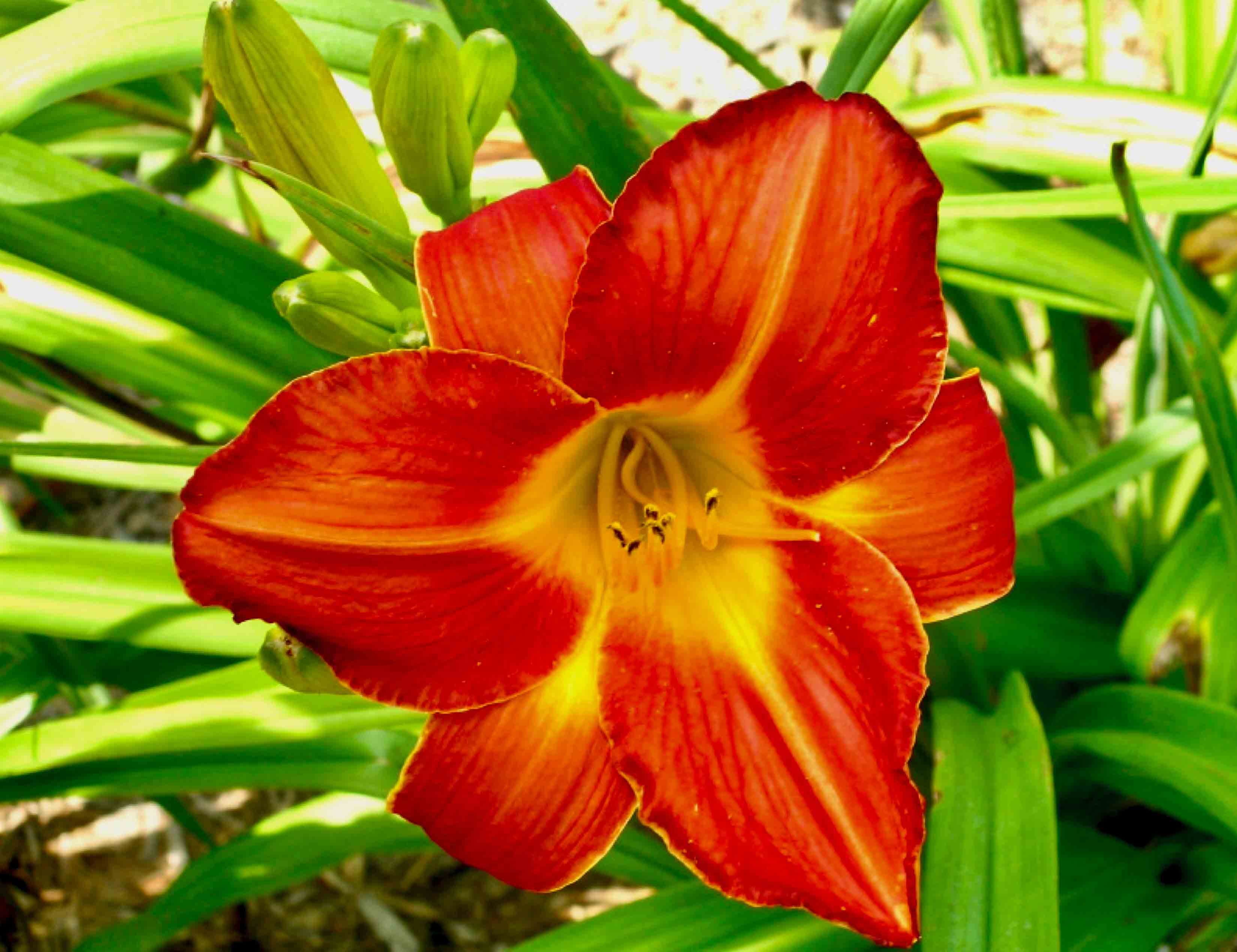
Hemerocallis "Black Eye"
Al Goldner liked daylilies with an eyezone. "Black Eye" has lavender-pink flowers with a dark pink eye and a green throat. This mid-season bloomer is about 76 cm (30 inches) tall with 13 cm (5-inch) flowers. Compare the flowers of this plant to those of "Improved Black Eye," which Goldner liked much better. The original "Black Eye" was registered with the American Hemerocallis Society in 1984 by Al Goldner.
1993 AHS Honorable Mention Award Winner
Registered with the American Daylily Society in 1984 (Goldner)
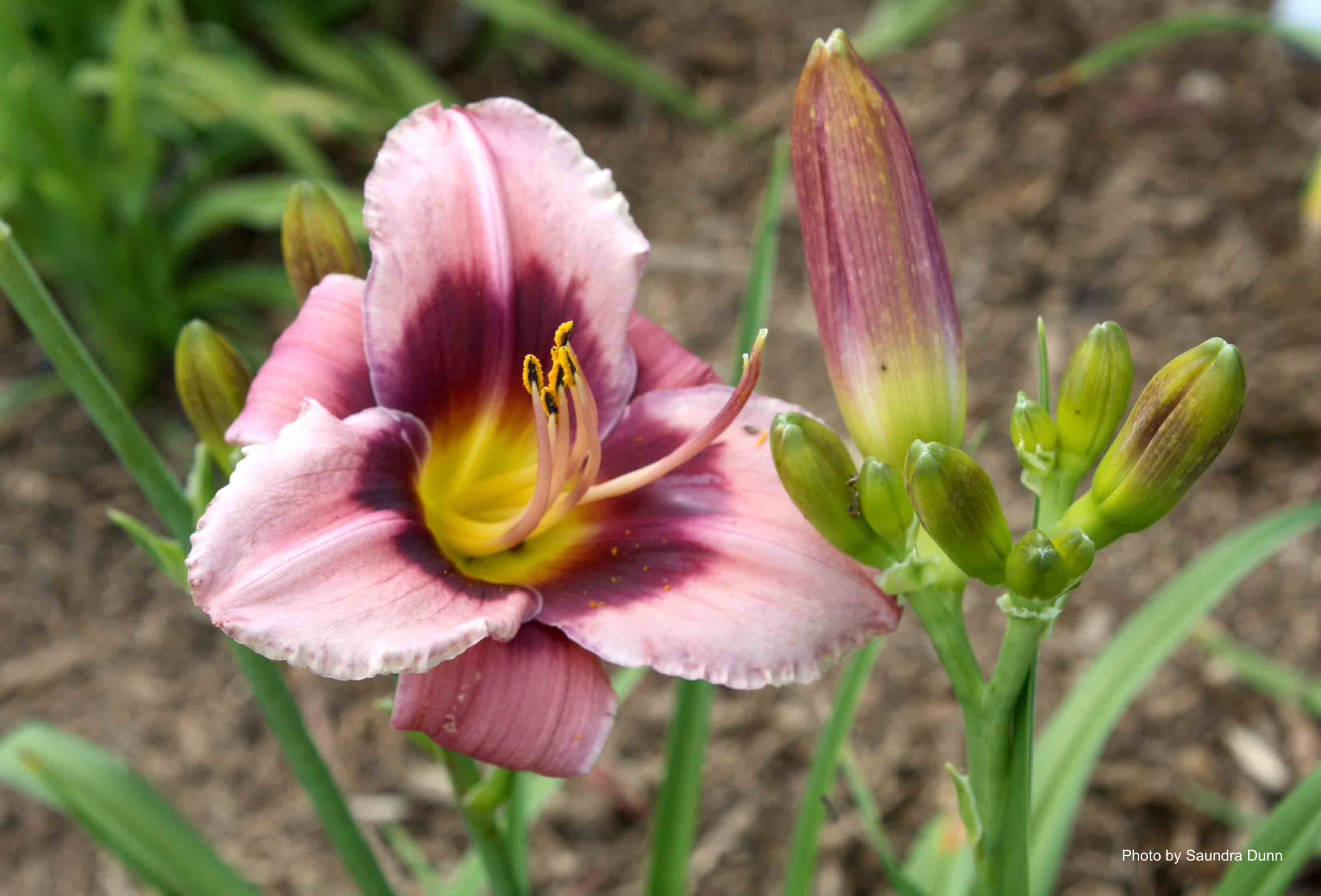
Hemerocallis "Budd Lite"
One of Goldner’s shorter cultivars (61 cm; 24 inches), this one is named for Professor J.L. Budd, a horticulturalist who played a key role in developing hardy fruit trees in America. "Budd Lite" is a heavily blooming cultivar with 13-cm (5-inch) dark red flowers that change to orange by late afternoon. At Beal Botanical Garden, we often compare "Budd Lite" with "Grape Juice," as we received them at the same time. They have similar scape height and bud count, however, "Budd Lite" is more bronze in tone while "Grape Juice" is more purple. "Budd Lite" has no eyezone, while "Grape Juice" has a prominent dark purple eyezone.
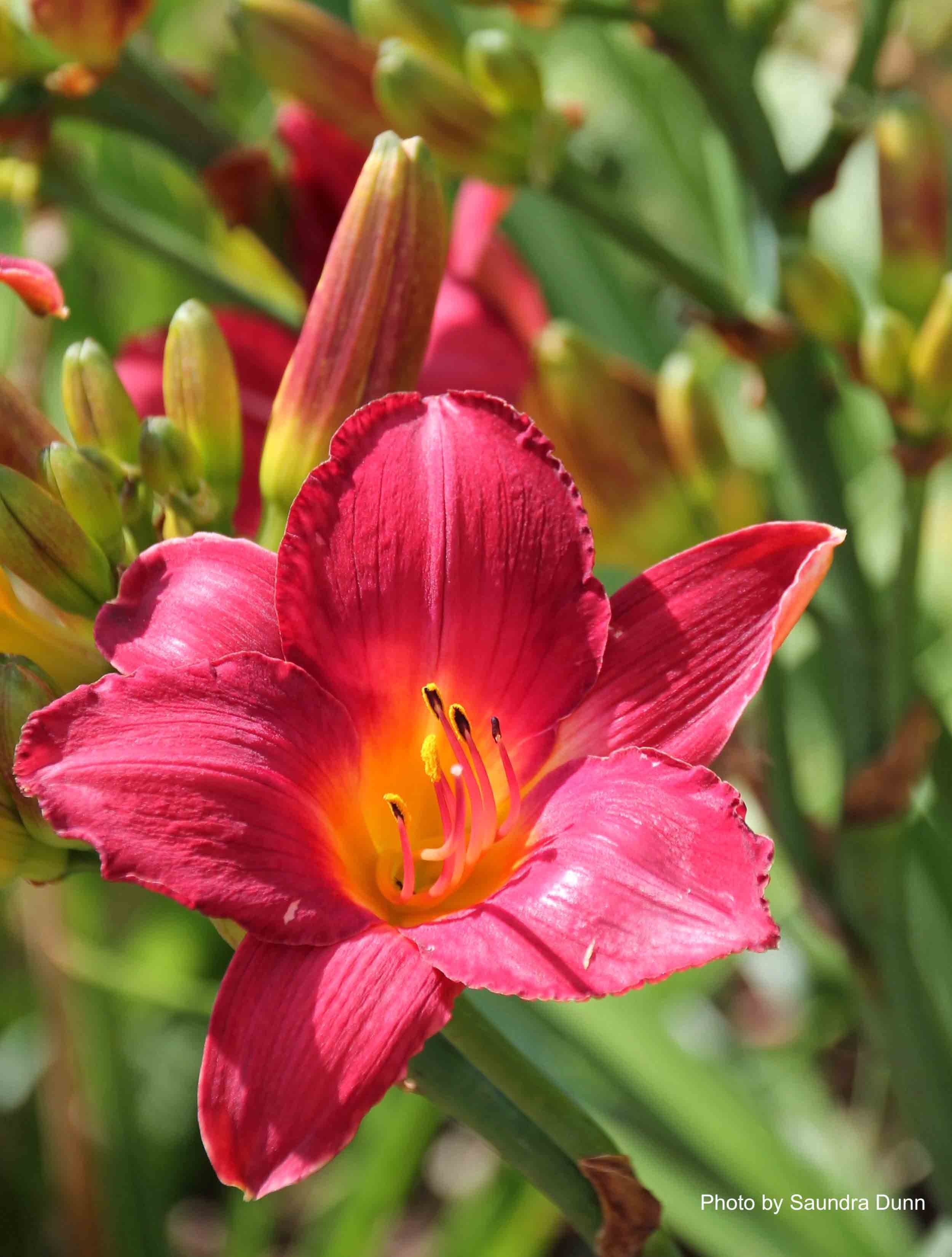
Hemerocallis "Bullfighter"
About 90 cm (35 inches) tall, this mid-late season bloomer was named by Goldner’s grandson, Brandon Buyaki. The 14-cm (5.5-inch) flowers are a saturated brilliant red, with a yellow-green throat. These flowers bloom at the same time as "Rich Uncle" and "Evening Tulip" in this bed. This cultivar and several others were given to the W.J. Beal Botanical Garden by Al Goldner’s family, owners of J&O Tree Farm, Howell, Michigan in October 2010.

Hemerocallis "Cake Plate"
Among daylily enthusiasts, "Cake Plate" is one of Goldner’s most popular cultivars. The large (20-cm, 8-inch) flowers are a stunning bright orange with vivid red eye and dark veining. This plant stands about 90 cm (35 inches) and typically begins to bloom in mid-August, continuing to produce flowers well into September.

Hemerocallis "California Peach"
Al Goldner produced a few diminutive daylily cultivars that could be considered “edging plants.” This example stands only 30 cm (12 inches) tall. The small flowers, about 11 cm (4.5 inches) in diameter, have an interesting melon polychrome color and ruffled edges. "California Peach" is a late-season bloomer, beginning to bloom in mid-July. The plants in this bed were given to the W.J. Beal Botanical Garden in late August 2002 by Al Goldner himself when he was liquidating daylilies in his private Bloomfield Hills gardens. Parentage of this plant has never been recorded.

Al Goldner named this mid-late season cultivar in honor of an MSU professor who was one of his mentors in the field of floriculture. The large (19-cm, 7.5-inch), bold-colored flowers are a yellow-red blend with orange tips and a wide yellow throat. The height is about 86 cm (34 inches).
2007 AHS Honorable Mention Award Winner
Registered with the American Daylily Society in 1987 (Goldner)
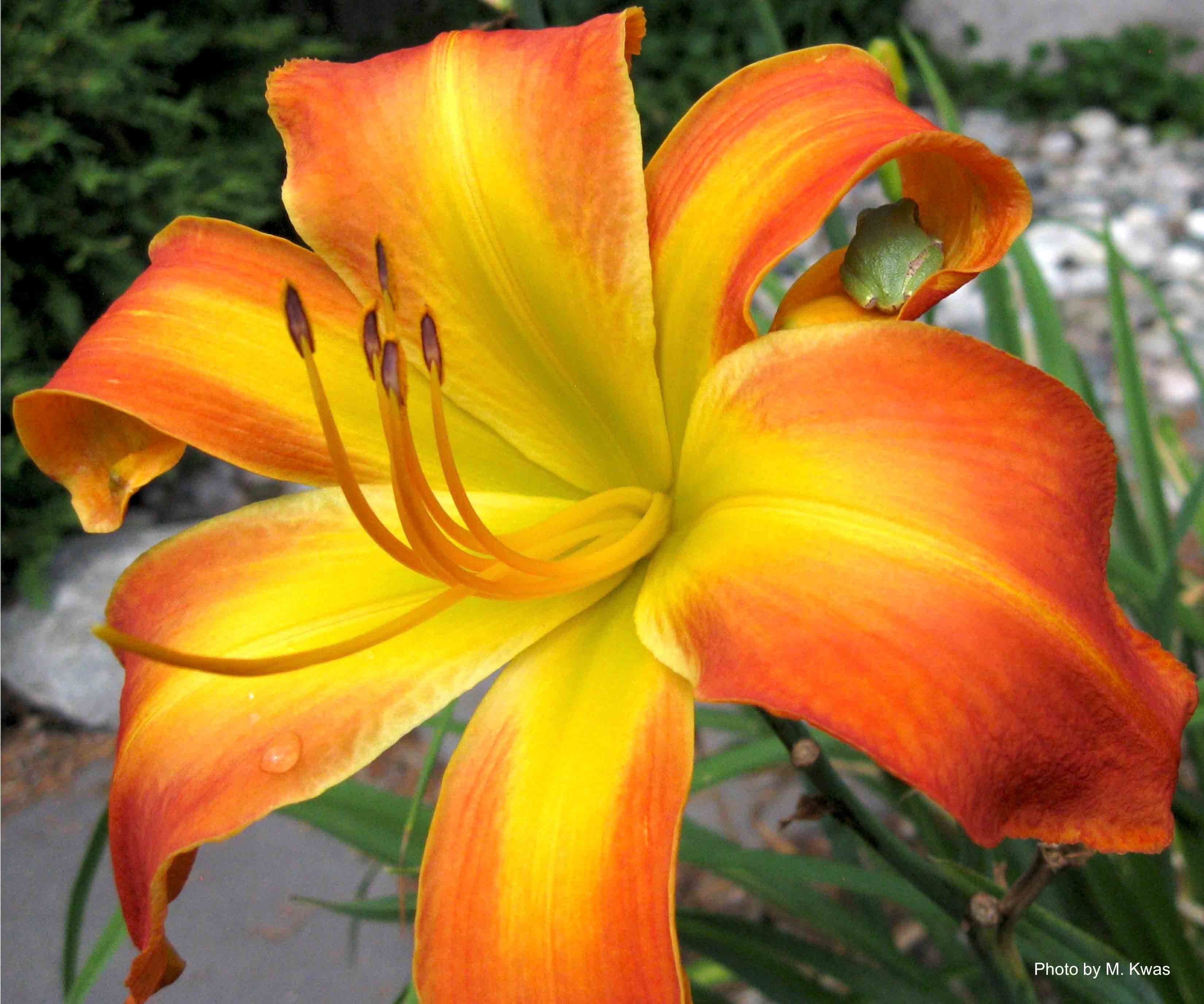
Hemerocallis "Cowboy Scarf"
Although this aptly named cultivar is popular among daylily enthusiasts as a garden plant, Al Goldner considered its main value to be for breeding. It was registered after his death by a friend and admirer. About 20 cm (8 inches) in diameter, the reddish bitone flowers exhibit bleeding veins and a red eye above a bright green throat. This midseason bloomer stands about 86 cm (34 inches) tall, and is considered an Unusual Form Daylily, referring to the flower shape.
Registered with the American Daylily Society in 2008 (Goldner-Rinke)
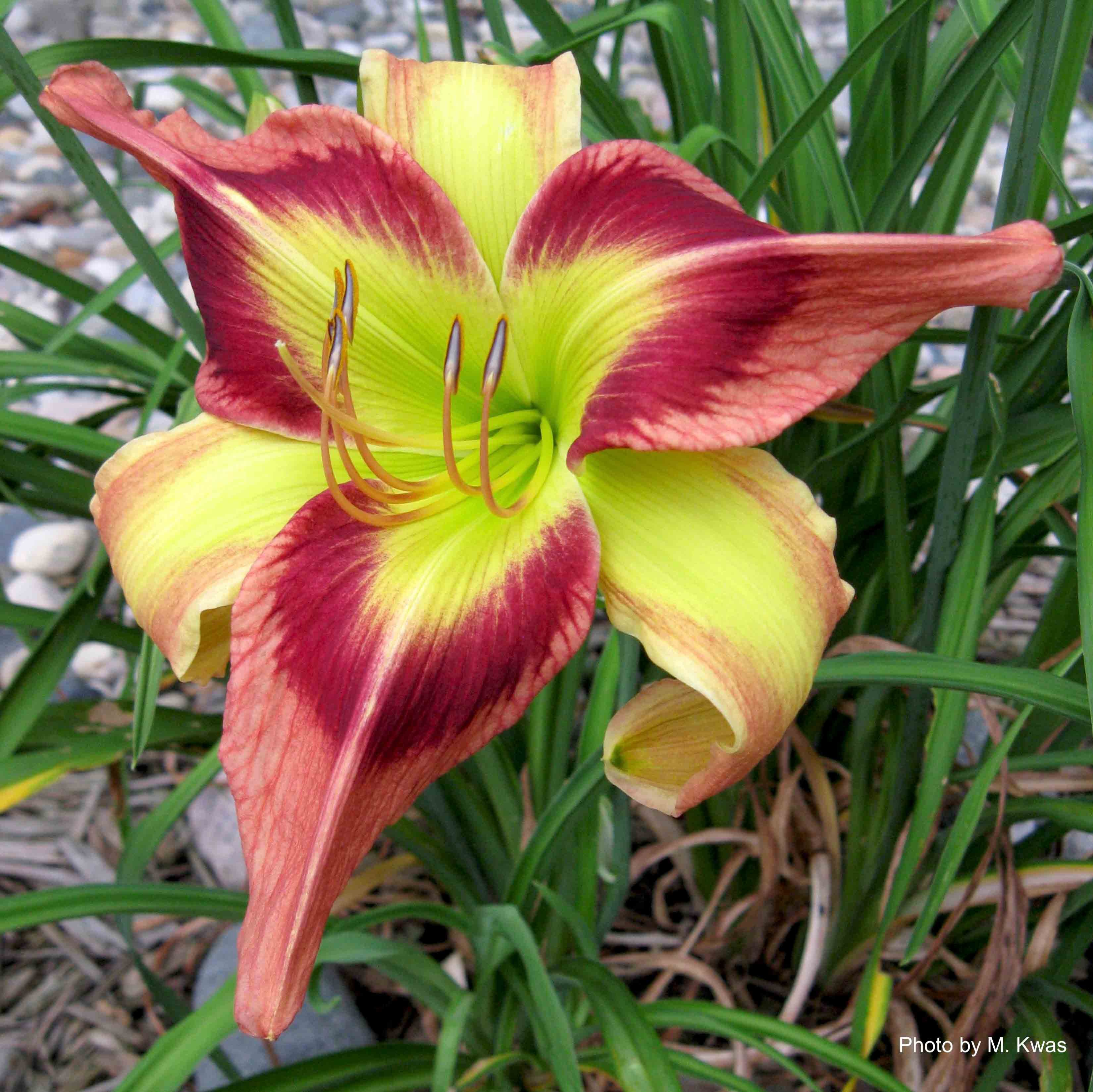
Hemerocallis "Daffodil"
Al Goldner gave this late-blooming cultivar its name because it has a long pedicle (neck), a trait associated with daffodils. The 15-cm (6-inch) blooms are bold pink and yellow, held atop 91 cm (36-inch) scapes. The petals are wide, substantial, and recurved. "Recurved" means that the petals reflex back toward the base, giving a rounded ball-like appearance. As with many of the Goldner hybrid crosses, this one has unrecorded parentage.
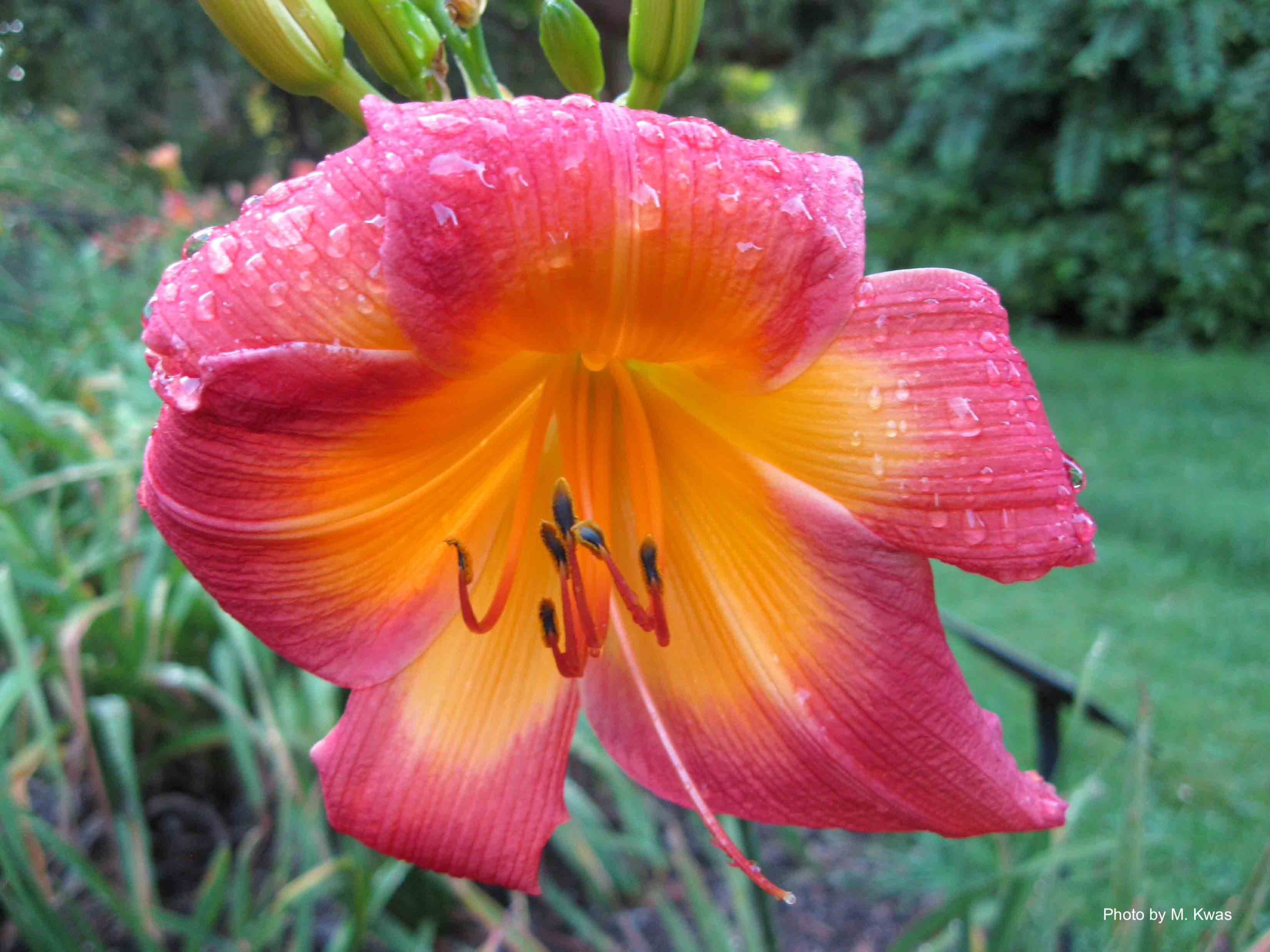
Hemerocallis "Dorothy Farmer"
The flowers of this midseason bloomer are pink with strong ribs and a yellow throat.

Hemerocallis "Empress of China"
This mid-late season bloomer stands about 122 cm (48 inches) tall. The flowers, 18 cm (7 inches) in diameter, are a rose-pink polychrome, set off by a green throat. This and "Sunny Intervals" were the first two hybrids Al Goldner registered with the AHS.
Registered with the American Daylily Society in 1979 (Goldner)
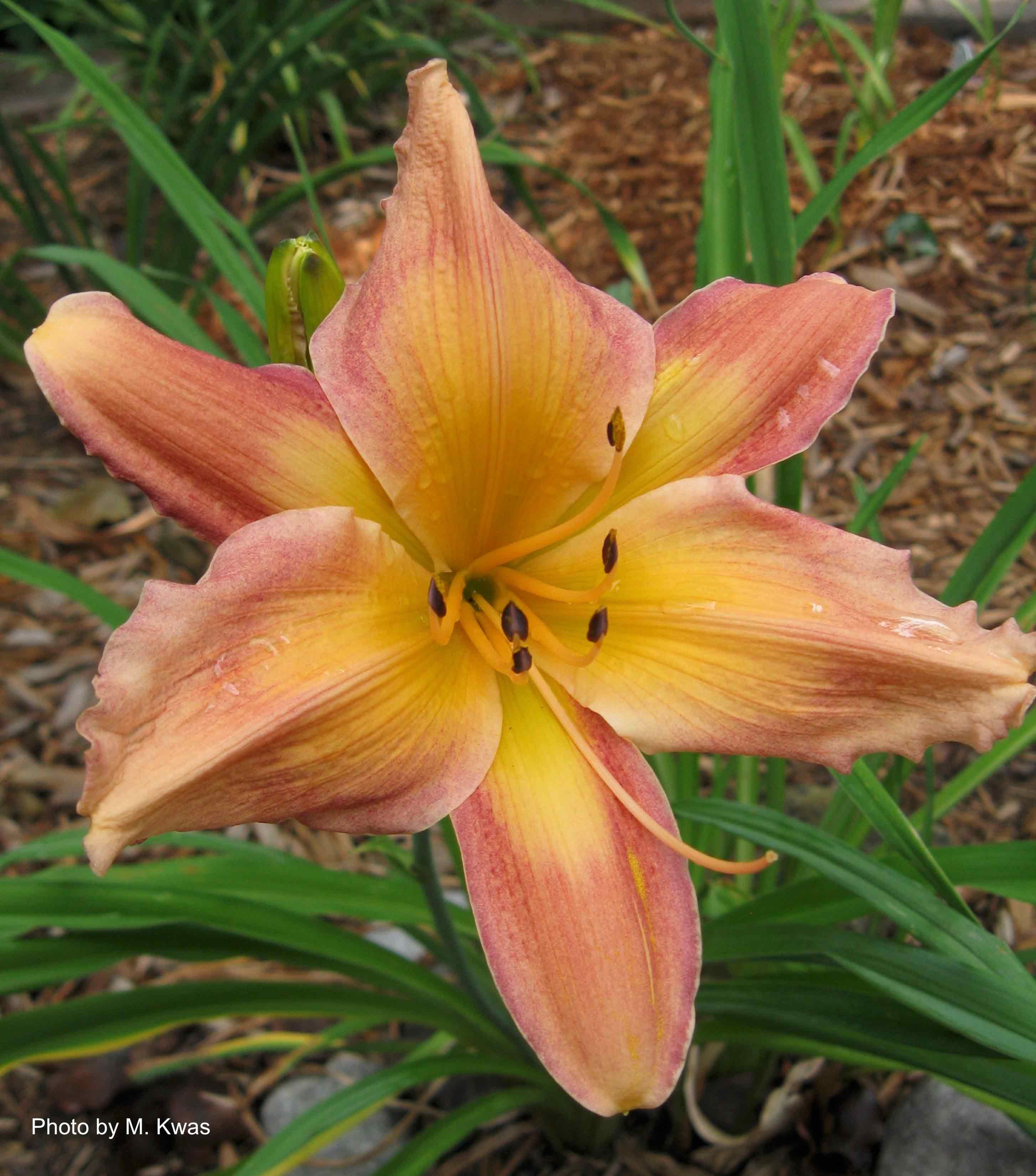
Hemerocallis "Evening Tulip"
Al Goldner was quite fond of this cultivar, which opens like a tulip between 7 p.m. and midnight. "Evening Tulip" has golden yellow flowers, 18 cm (7 inches) in diameter, atop 74 cm (29-inch) scapes. Having long, thin petals, it is termed a "spider variant" by the AHS, as it is not a true spider in form. It has an extended bloom period, with flowers remaining open into the evening, after most daylilies close. It begins to bloom here in mid-July.
Registered with the American Daylily Society in 1990 (Goldner)
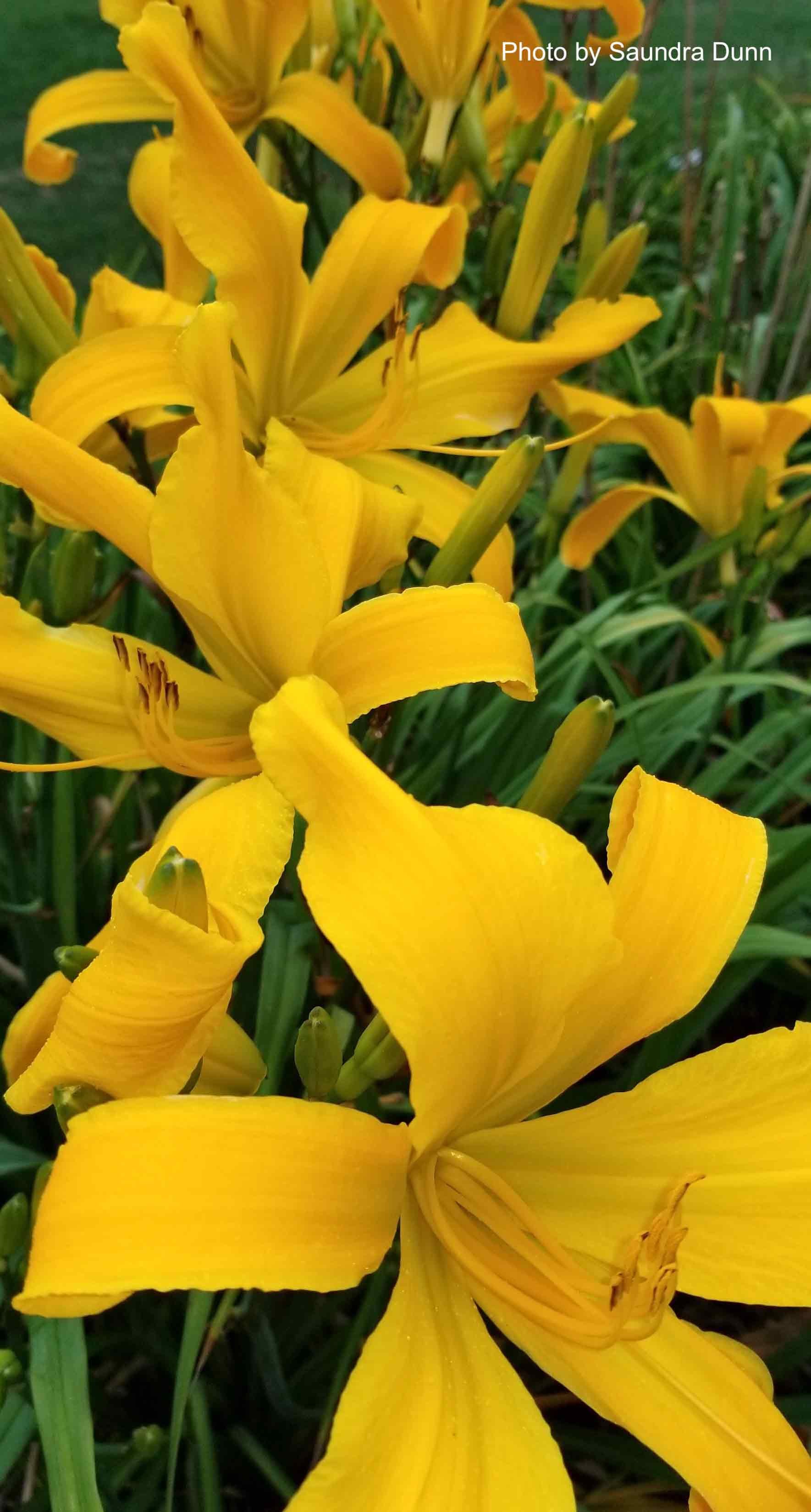
Hemerocallis "First Call"
Approximately 13-cm (5-inch) diameter flowers on 61-cm (24-inch) scapes (maximum). Blooms are peach-pink with a maroon band, pale midrib and bold yellow-green throat. The three petals are ruffled and edged in the same maroon as the band. Notice, the three sepals do not have the band or ruffling. "First Call" has a sweet fragrance. It blooms the first week of July here, and is one of the earliest Goldner daylilies to bloom along with "Honolulu Fruit" and "Tiny Yellow Spider."
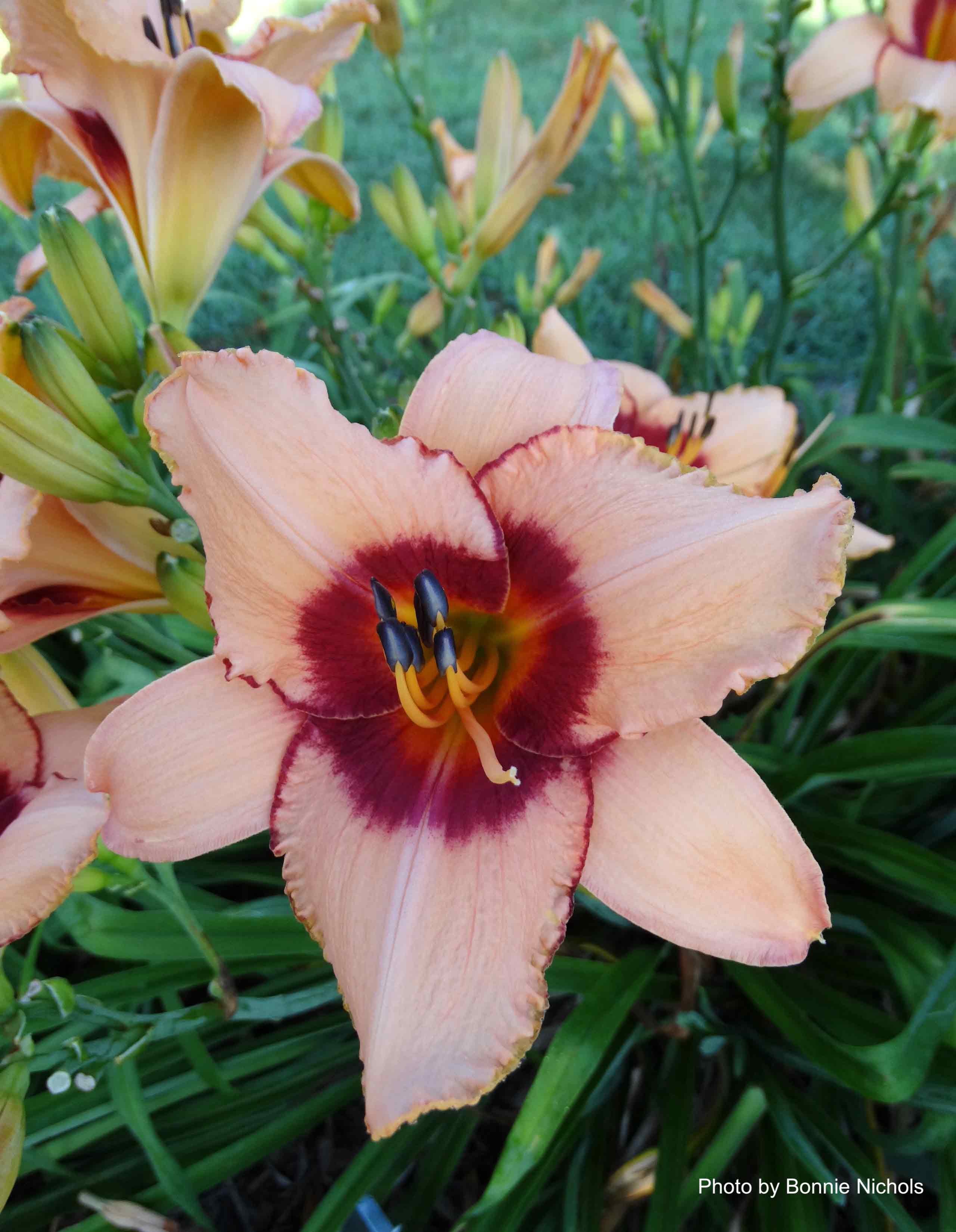
Hemerocallis "Goldner's Bouquet"
Registered by a friend after his death, "Goldner’s Bouquet" produces flowers about 23 cm (9 inches) wide on 91-cm (36-inch) scapes. The blooms are bright yellow, have a firm texture, and never suffer from spots caused by water or sunlight. Al Goldner considered this plant to be his very best cultivar, and during bloom season he always kept some of its flowers in a vase on his patio table.
Registered with the American Daylily Society in 2008 (Goldner-Pruden)
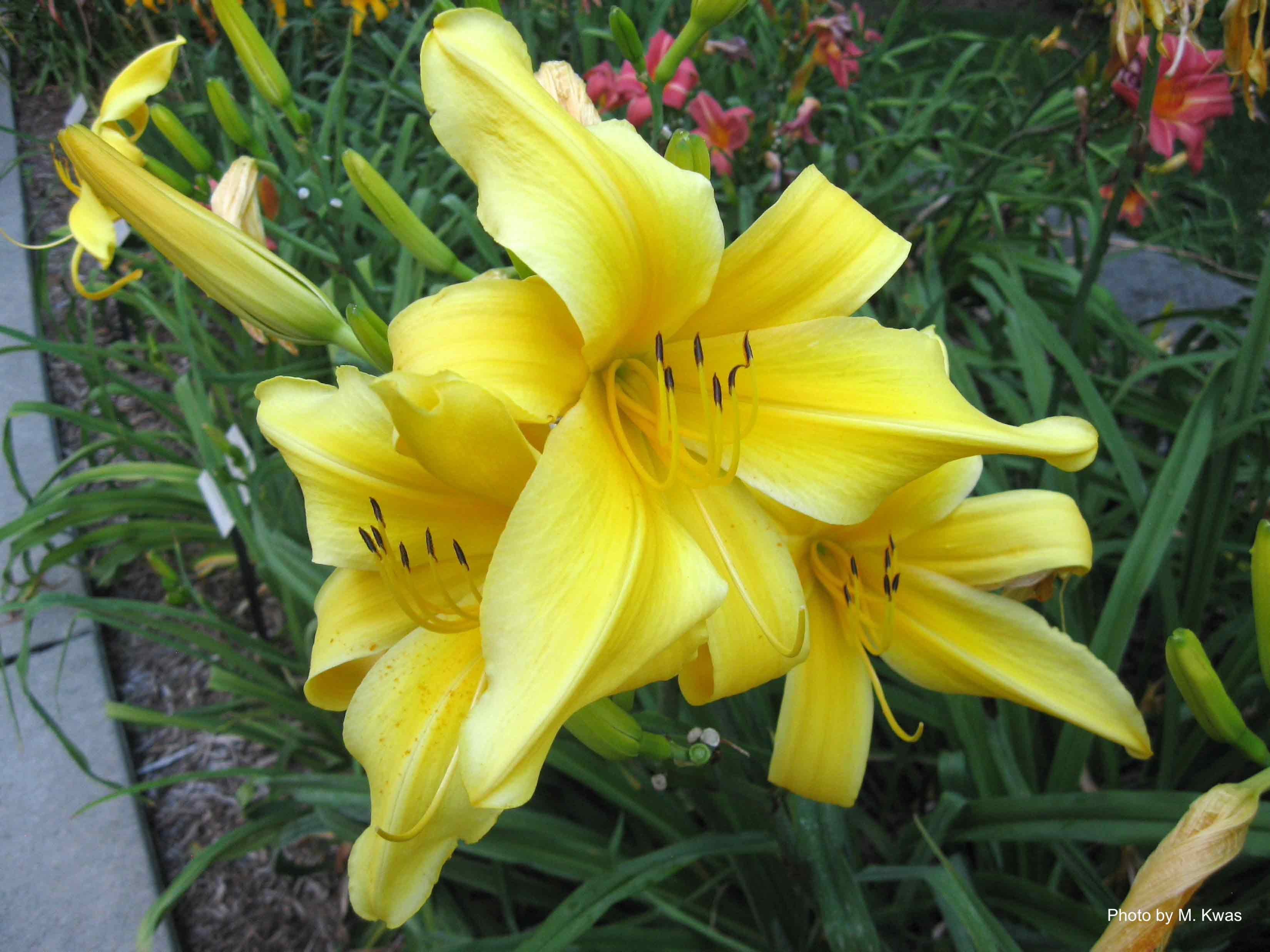
Hemerocallis "Goldner's Gift"
Another of Goldner’s selections that was registered after his death, this cultivar has 15-cm (6-inch) blooms borne on 60-cm scapes. The flowers are purple in color, with gold midribs and throat. A mid-late season bloomer, as are most of Al Goldner's daylilies. At Beal Garden this selection is very long-blooming.
Registered with the American Daylily Society in 2009 (Goldner-Cantini)

Hemerocallis "Goldner's Red"
May also be known by the cultivar name "Goldner Red"
One of the earliest blooming plants in the collection, this cultivar stands about 76 cm (30 inches) tall and produces abundant 10-cm (4-inch) diameter flowers. The blooms are bold red with a darker red halo surrounding a yellow throat and ruffled edges. Halos differ from eyezones in that they are fairly indistinct while eyezones are a distinct pattern.
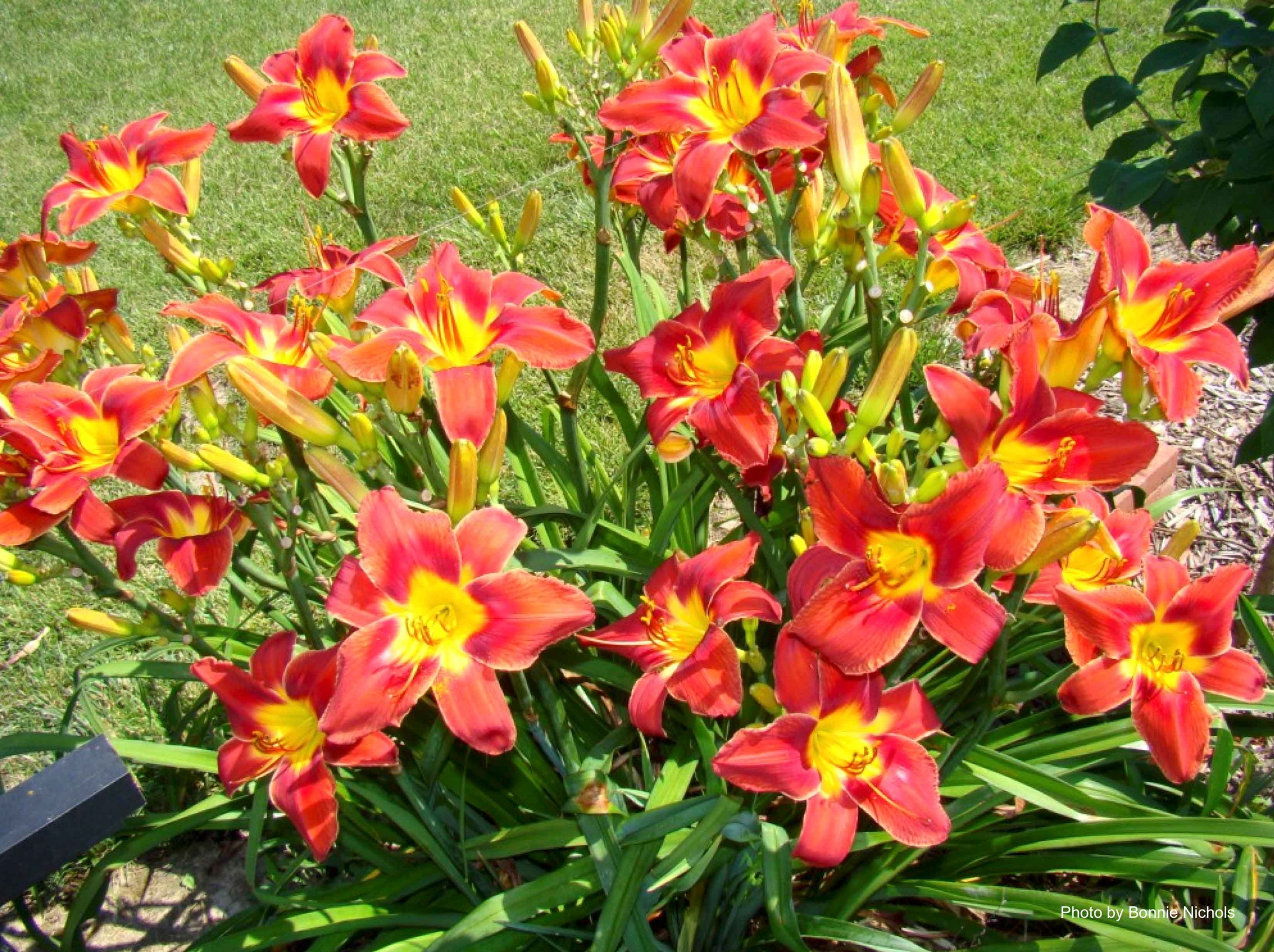
Hemerocallis "Grape Juice"
Received from Al Goldner at his home in Bloomfield Hills in August 2002. As the name suggests, this cultivar’s purple flowers, about 15 cm (6 inches) in diameter, are the color of grape juice. A darker purple band surrounds the yellow-green throat. The flowers are borne on 61-cm (24-inch) stems or, in proper daylily terminology, “scapes.” Like many of Goldner’s cultivars, "Grape Juice" is a mid-late season bloomer.

Hemerocallis "Honolulu Fruit"
This mid-late season bloomer is a bitone, i.e., the petals and sepals display different colors or different shades of the same color. The ruffled flowers are orange with a bold red eye and are 16.5 cm (6.5 inches) in diameter. The scapes (stems) are about 91 cm (36 inches) tall. Al Goldner produced several selections of "Honolulu Fruit" that differ dramatically in appearance. They are distinguished by numbers indicating they may all be full-sibs, produced from a single cross. Pictured is Hemerocallis "Honolulu Fruit #2."
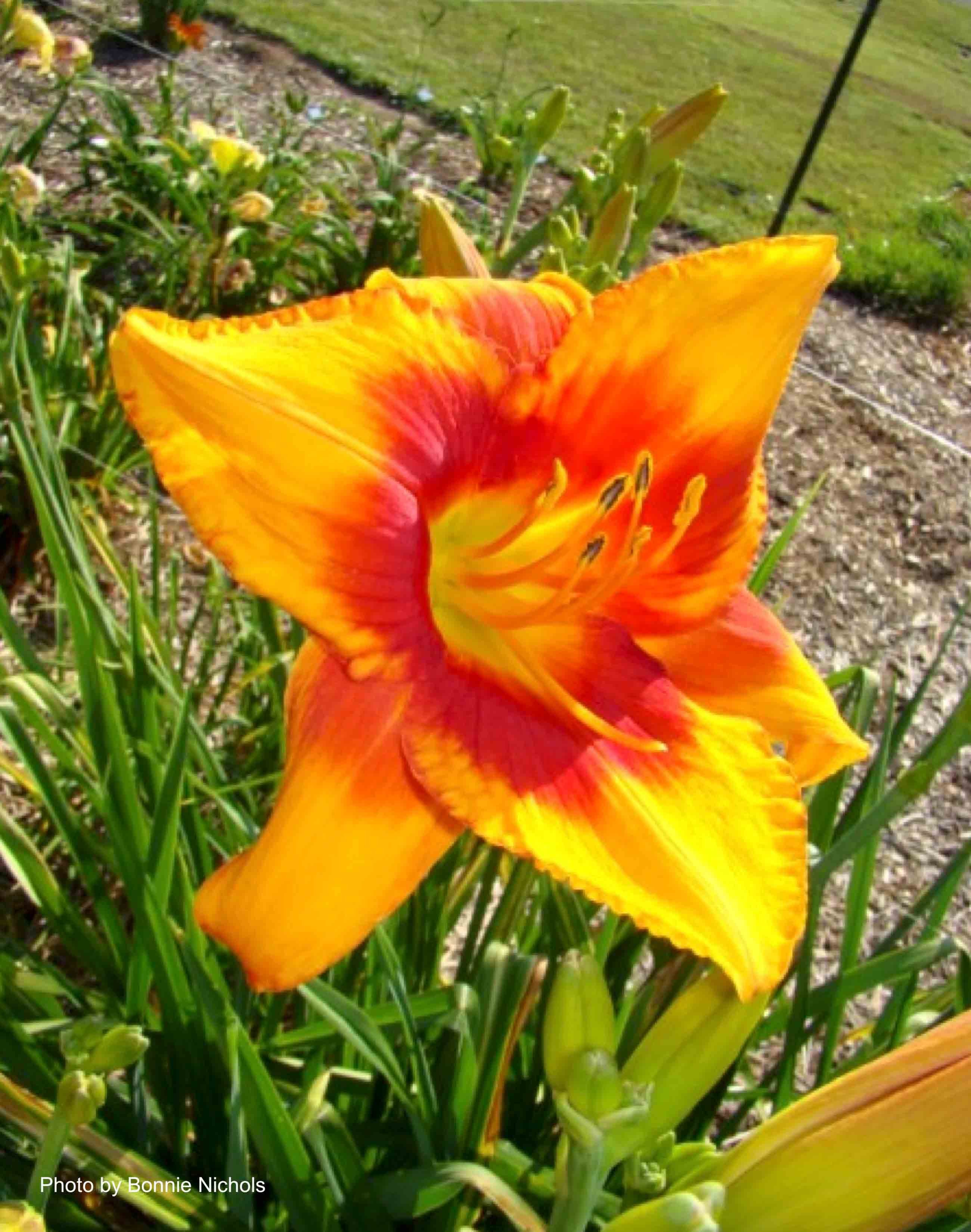
Hemerocallis "Improved Black Eye"
May also be known by the cultivar name "Dark Eye Improved."
Al Goldner described this daylily as “lavender w/ dark eye, grows neat, low; MUCH IMPROVED.” It is not to be confused with "Black Eye" (Goldner 1984) or his unregistered "Improved Black Eye #2," which is dark red to purple with a black purple eye. "Improved Black Eye" is a midseason bloomer that carries its 13-cm (5-inch) flowers on 81-cm (32-inch) scapes.
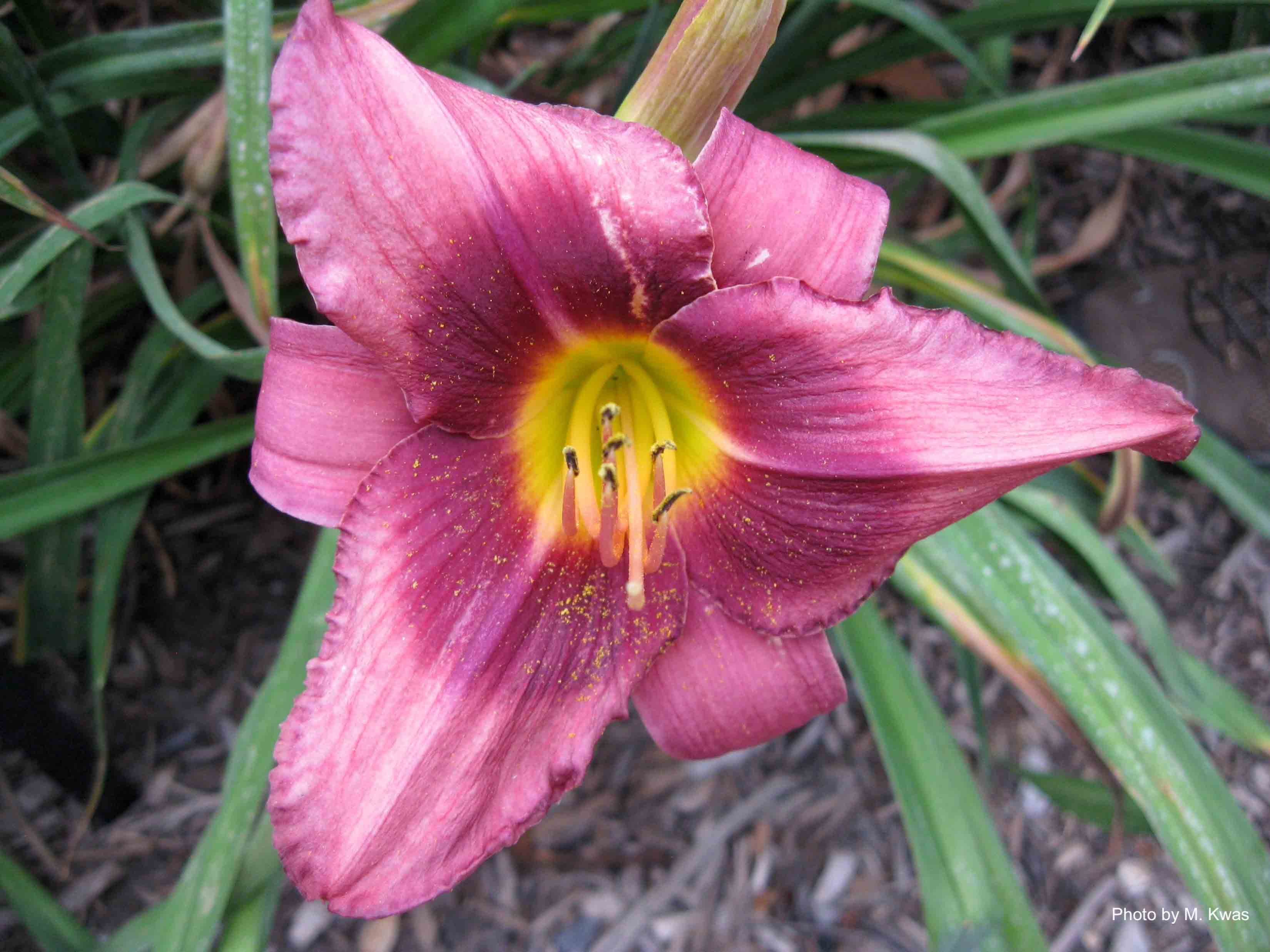
Hemerocallis "Iris"
Carried on 91-cm (36-inch) scapes, the large (23-cm, 9-inch) blooms exhibit polychrome coloration, radiating in various rich shades of orange, with a dark burgundy-purple eyezone, and a yellow throat. The form of "Iris" is called “crispate” because of the unusual pinched floral segments. Flowering begins in late July.
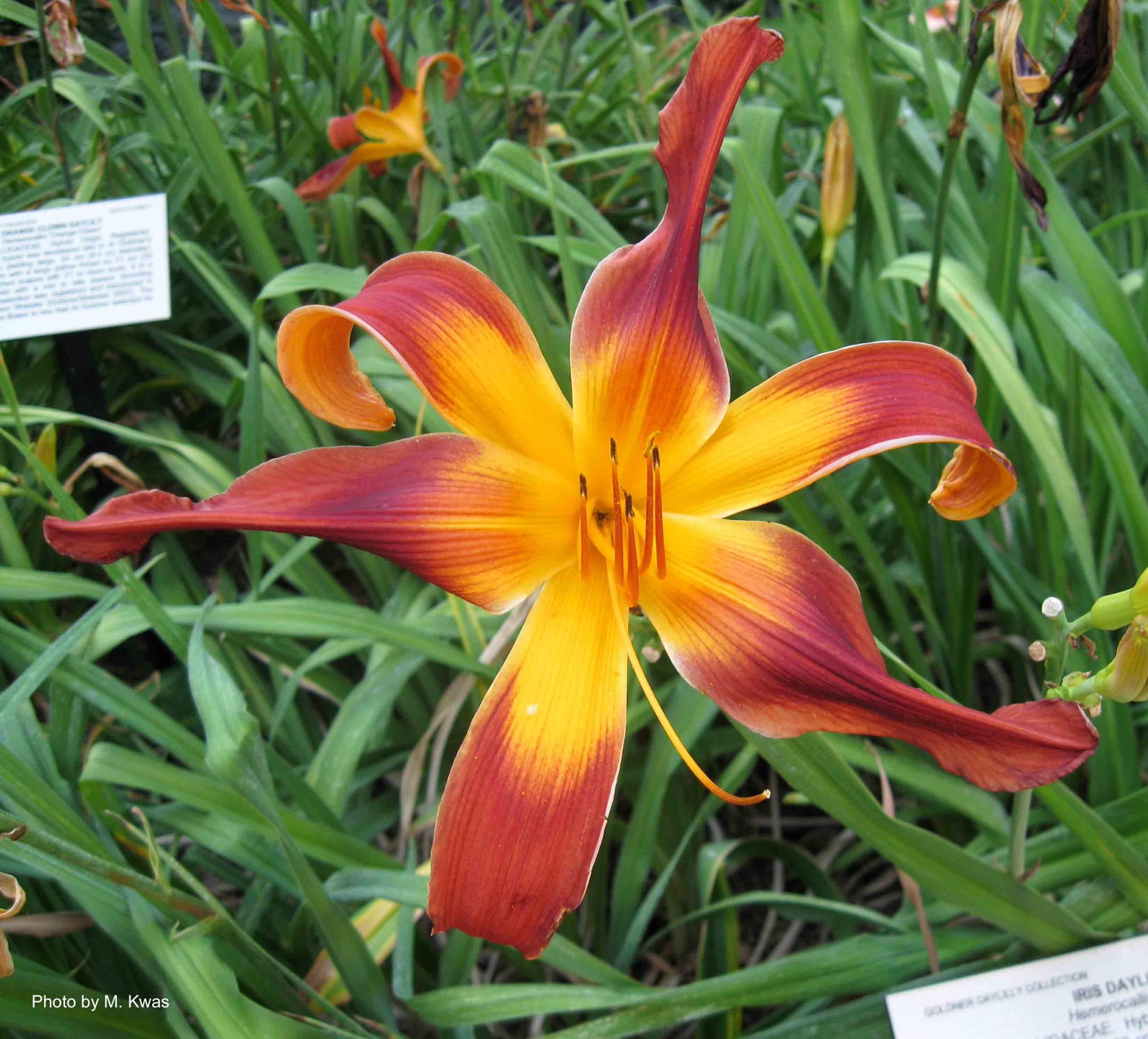
Hemerocallis "Jack Vincent Moynes"
May also be known by the cultivar name "Jack V. Moynes"
John (“Jack”) Moynes was a life-long friend of Al Goldner’s who had a successful career with Borg-Warner. A short plant (48 cm, 19 inches) with large flowers (23 cm, 9 inches), this cultivar begins to bloom in mid-August. The bold flowers are a deep lavender-red with a yellow throat and pale midribs; the color fades as day wanes. "Jack Vincent Moynes" and "Cake Plate" are two of the latest (and boldest) Goldner daylilies to begin blooming.

Hemerocallis "Ken Weikal's Burgundy"
Tentatively named by Beal Garden staff for Al’s landscaping colleague, who selected it from Al’s seedling test bed in August 2003. Two similar late-season daylilies with red flowers are in this bed. They are products of a single cross, i.e. they are full-siblings. This cultivar blooms later than its full-sib and has larger, darker red flowers with pale midribs and a yellow throat.

Hemerocallis "Ken Weikal's Early Low"
Tentatively named for Al’s landscaping colleague, who selected it from Al’s seedling test bed in August 2003. Two similar late-season daylilies with red flowers are in this bed. They are products of a single cross, i.e., they are full-sibs. The blooms are slightly more orange, less ruffled, and smaller than those of "Ken Weikal's Burgundy." It completes its blooming earlier than its full-sib.
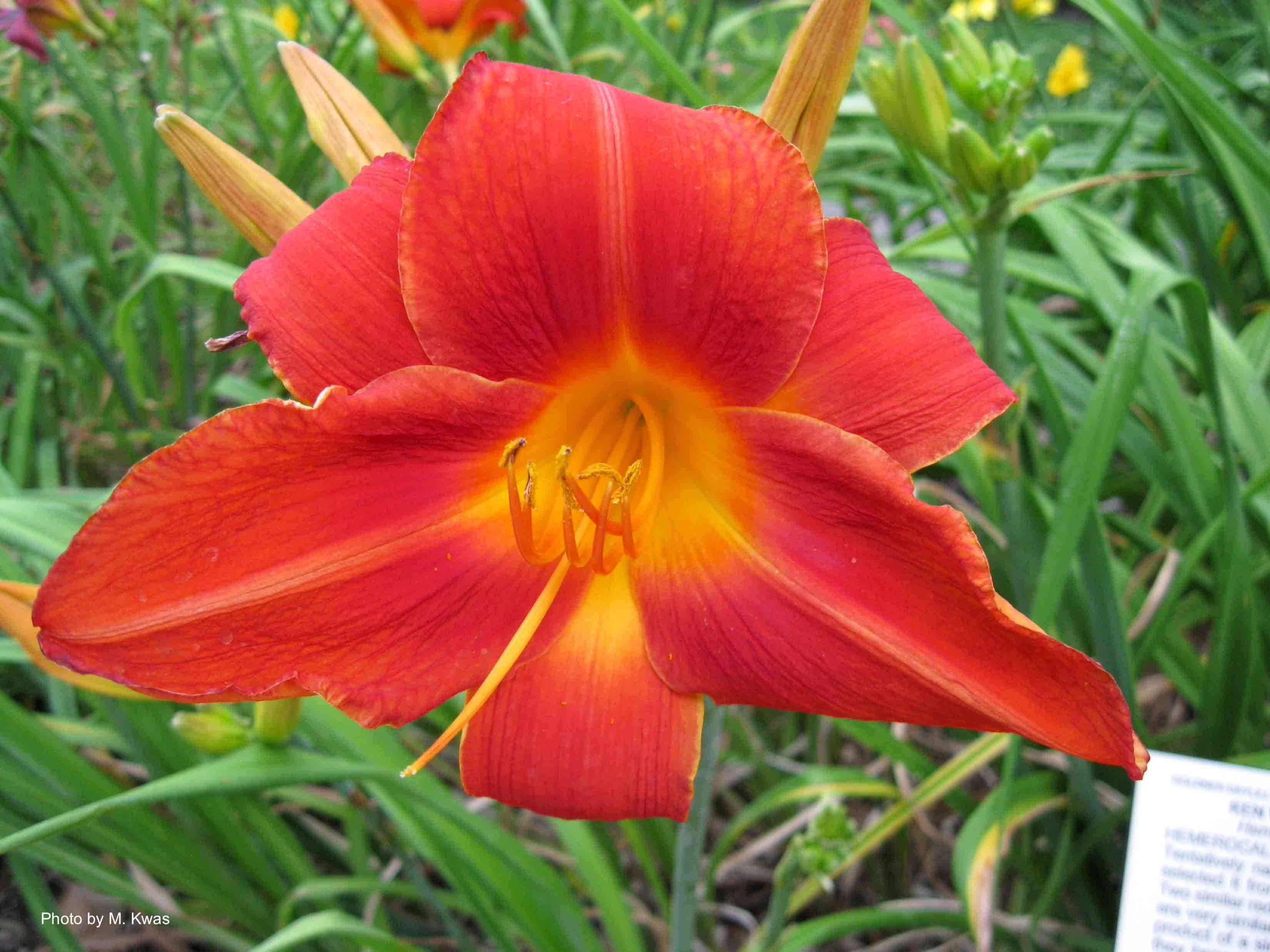
Hemerocallis "Low Pink with Green Throat"
Al Goldner was 84 years of age at the time he generated this hybrid seedling. The 18-cm (7-inch) flowers of this late-blooming cultivar have twisted, strap-like petals. Beginning to bloom (heavily) in August, it may rebloom in September. The cherry-red blooms are set off by a green throat that fades outward to light yellow, and the petals and sepals are veined in darker red. Closer inspection will show that the flowers have a dark red band and pale midrib on the petals only. At Beal Garden, this cultivar grows from 60 to 71 cm (24 to 28 inches) in height.
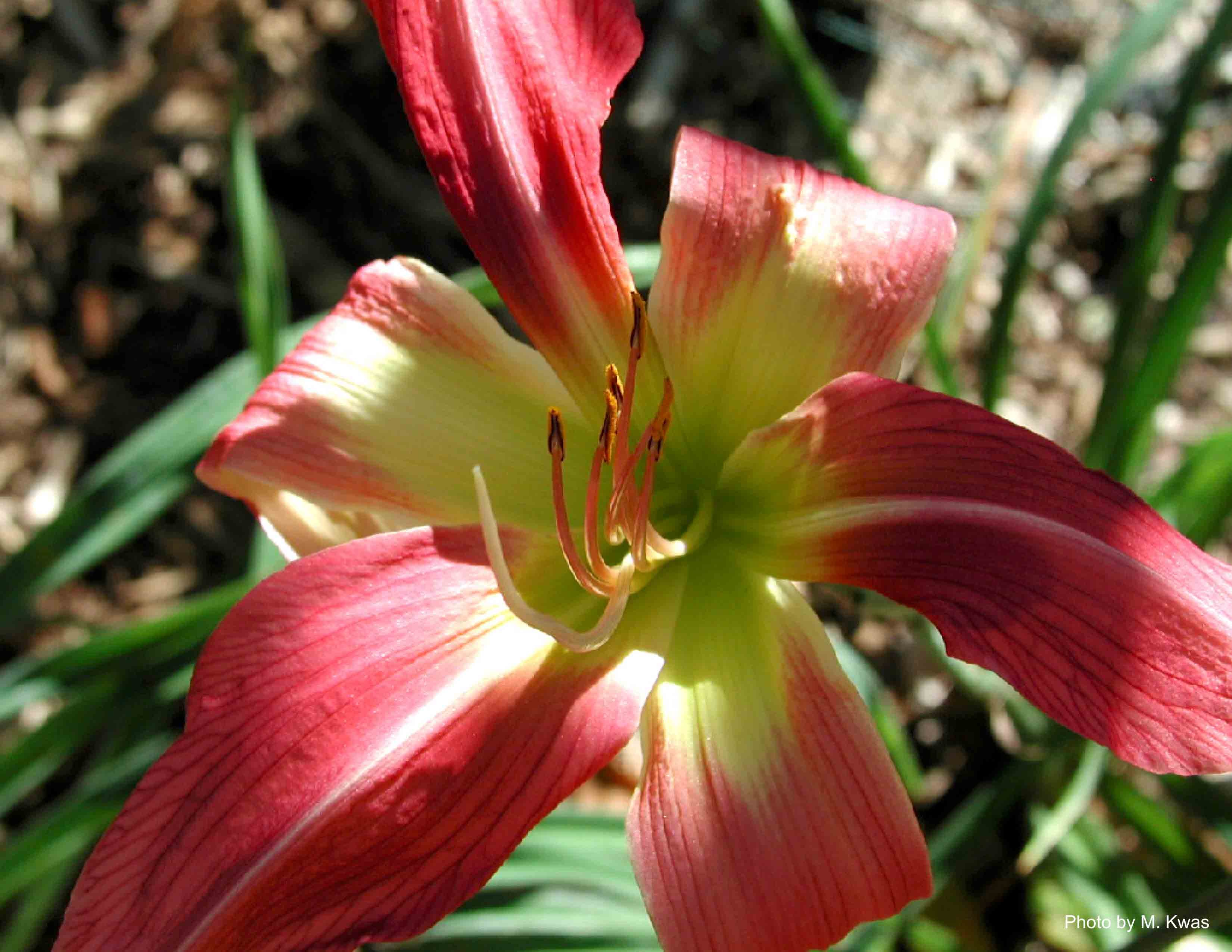
Hemerocallis "M.G. Type"
Received from Goldner Walsh Nursery in November 2005. Flowers are spider-like in form, having long, thin and twisted petals. Color is a rich yellow with darker orange dusting in specific areas. Bloom diameter is 20 cm (8 inches) or more and scapes are 76 to 91 cm (30 to 36 inches). Full bloom is in late July. This is not a true spider form. To be a true spider form, a daylily must have petals four times longer than wide.
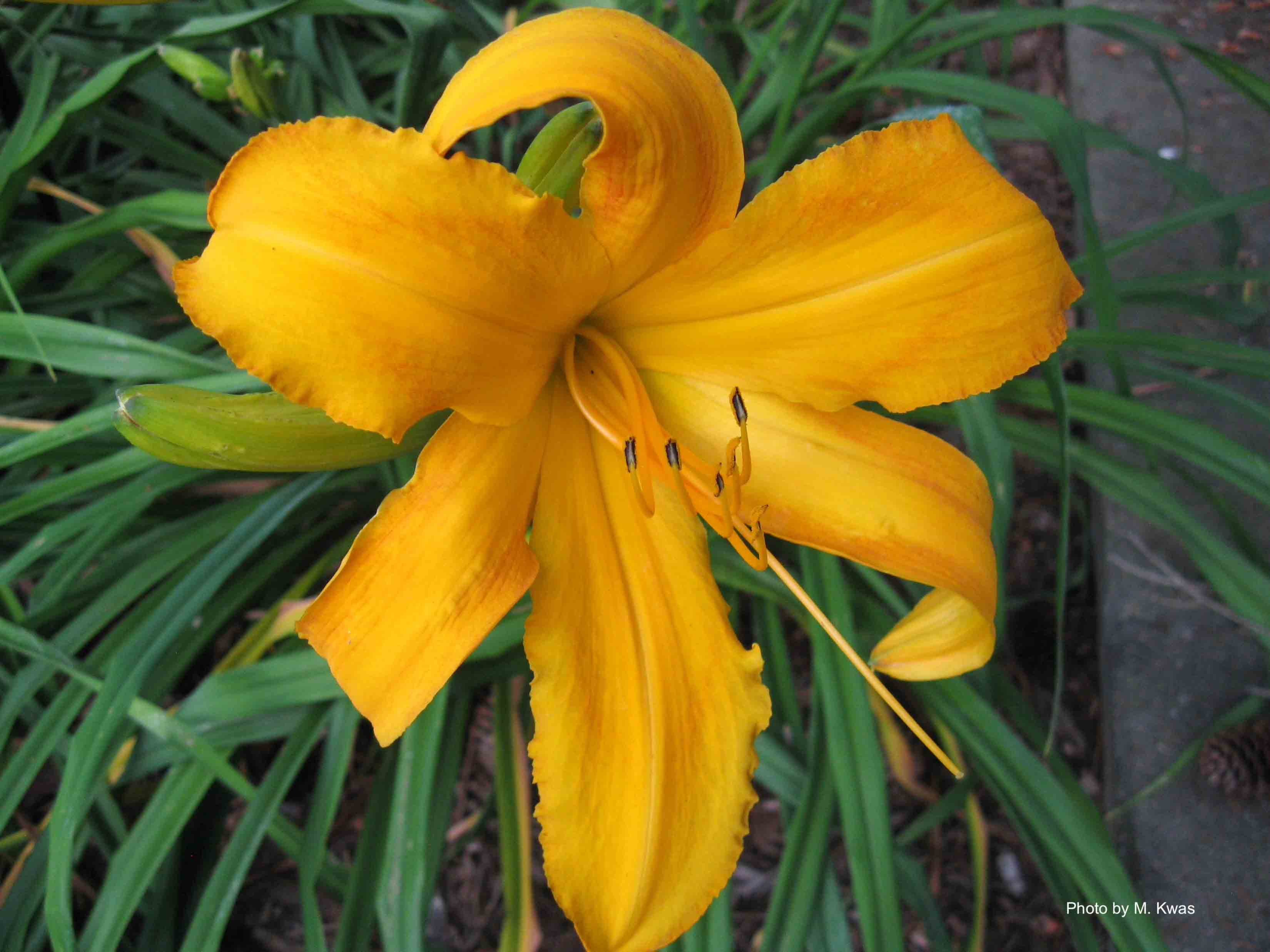
Hemerocallis "Michelle Buyaki"
This Goldner hybrid is named for Al Goldner's daughter. The flowers are a pale green just prior to opening, with dusty yellow-to-clear yellow petals turning yellow-green in the throat. The flowers are borne on scapes 46 to 56 cm (18 to 22 inches) in height.
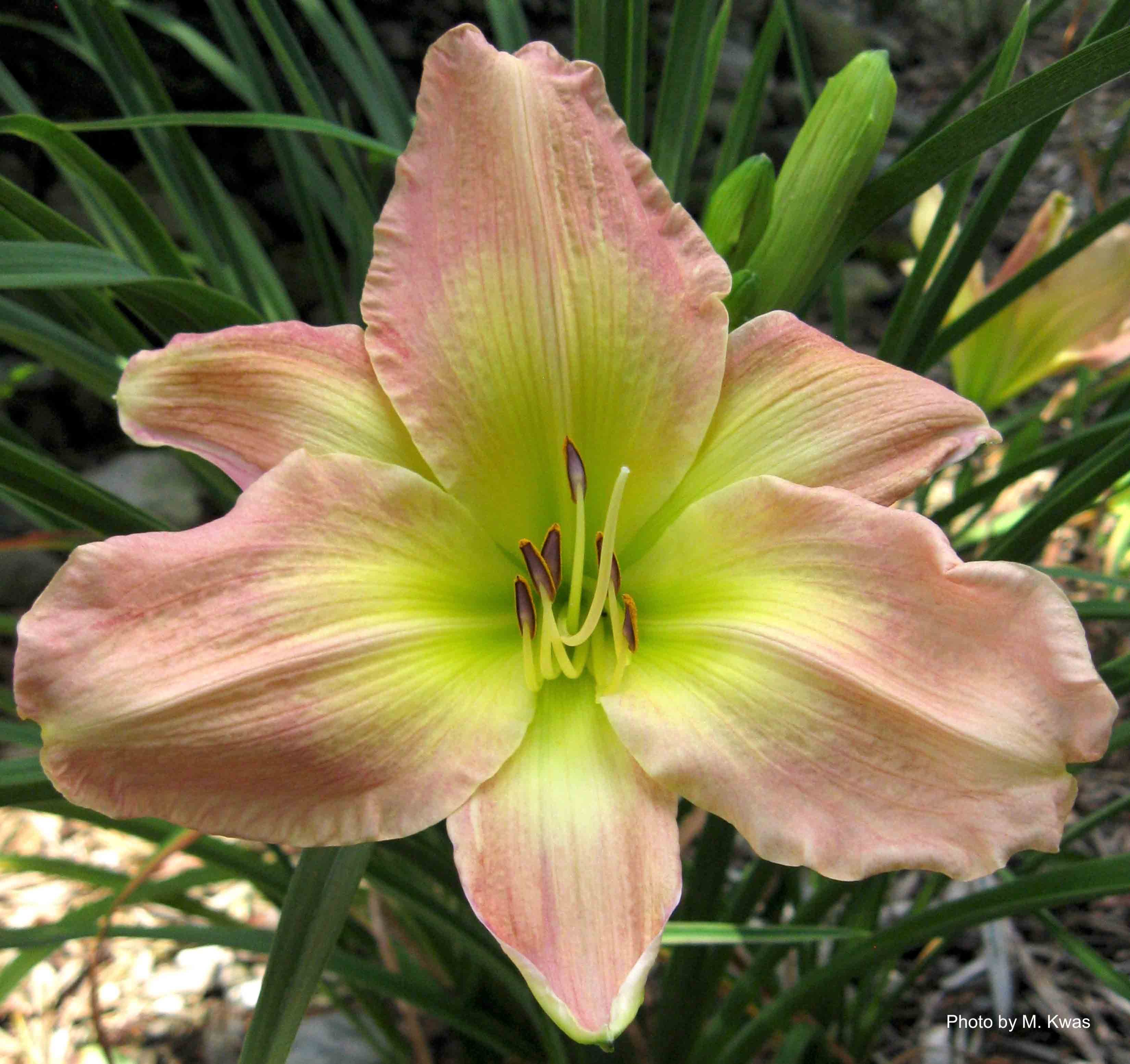
Hemerocallis "Orange Clown" (Goldner-Webster, 2007; tetraploid)
This late-blooming crispate form daylily has large (23-cm, 9-inch) blended orange flowers with a dark red-orange halo above a bright yellow-to-green throat. Notice the very fine "teeth" along the edges of the petals. The bold flowers show nicely above the tall foliage (81 cm, 32 inches) of this cultivar.
2020 AHS Honorable Mention Award Winner
Registered with the American Daylily Society in 2007 (Goldner-Webster)
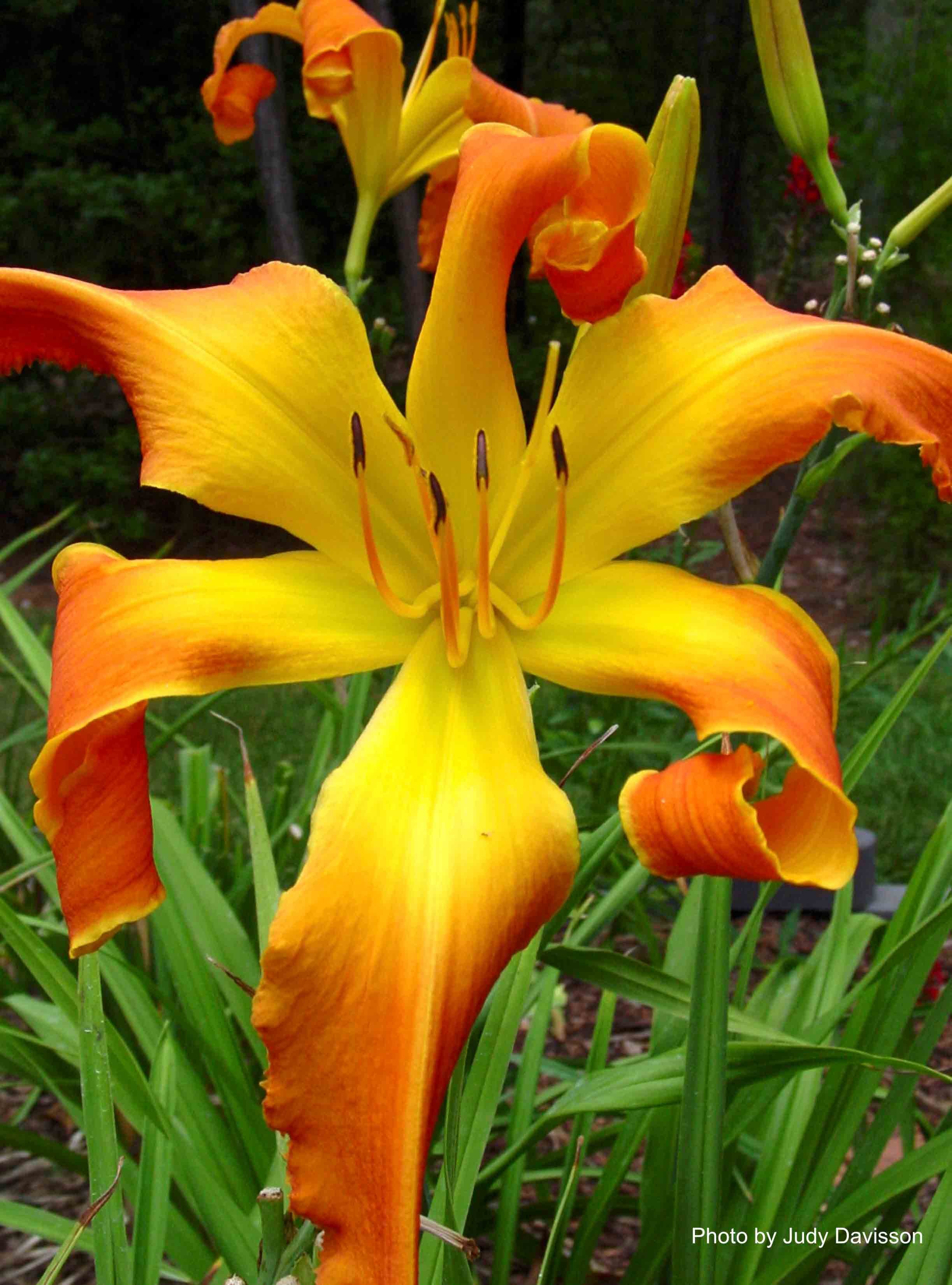
Hemerocallis "Oscareto Rex"
Originally named "Yellow Spider," this cultivar was renamed by Goldner’s family in honor of the son of the manager of J&O Tree Farm, Oscar, whose favorite toy at the time was a plastic T-Rex dinosaur. The petals of this bright gold self are lightly ruffled. In daylily terminology, “self” means that the petals and sepals have the same uniform color. This daylily has flowers 12 to 15 cm (5 to 6 inches) in diameter, and can grow 92 cm (36 inches) tall.
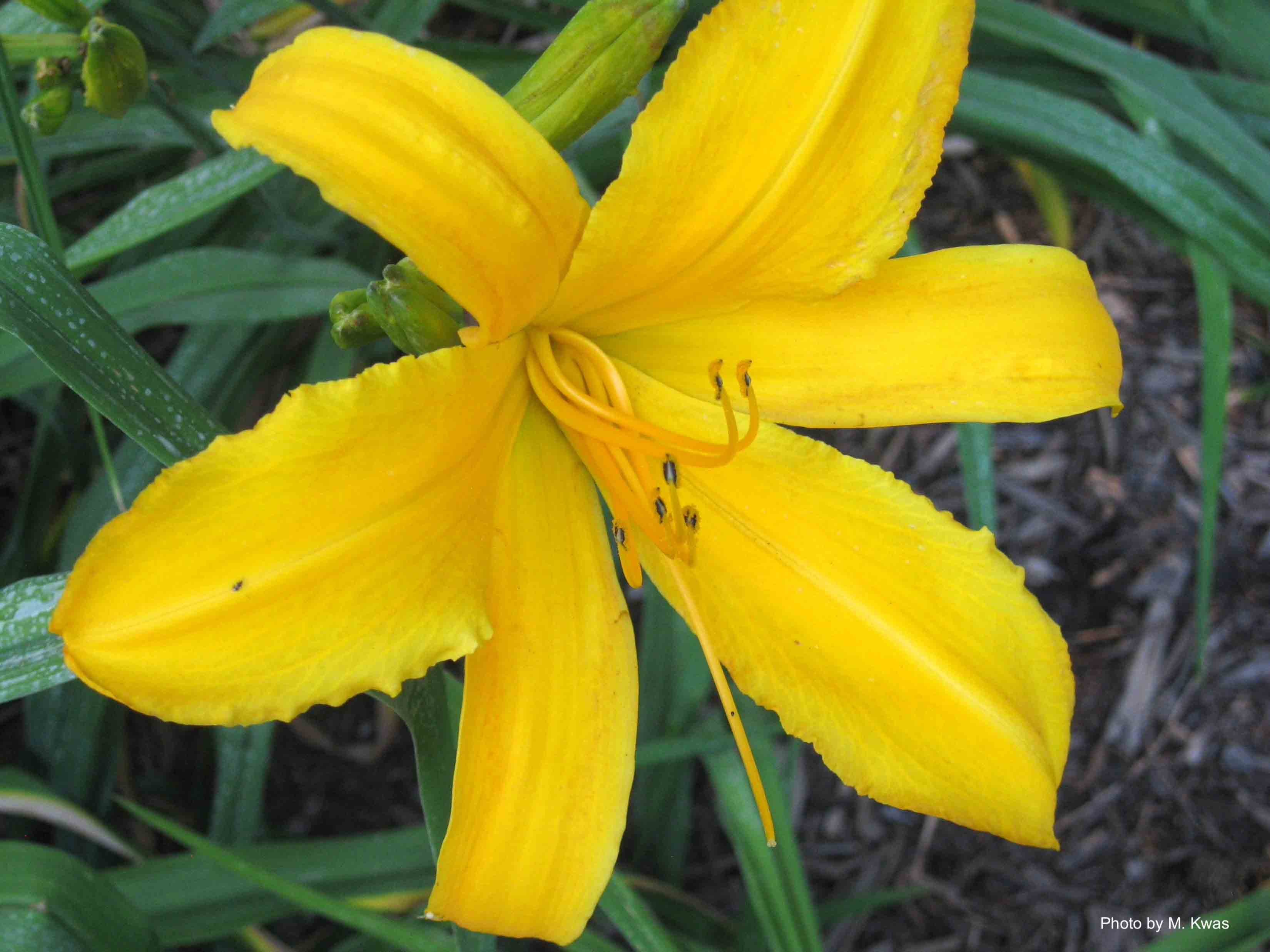
Hemerocallis "Picture Show"
May also be known by the cultivar name "Late Pink."
A tall (92-cm, 36-inch), late-blooming cultivar, this plant has 18 cm (7-inch) flowers that are light salmon with darker salmon eyezone and green throat. Originally named "Late Pink" by Al Goldner, his grandson renamed this selection, in part because it is not pink.
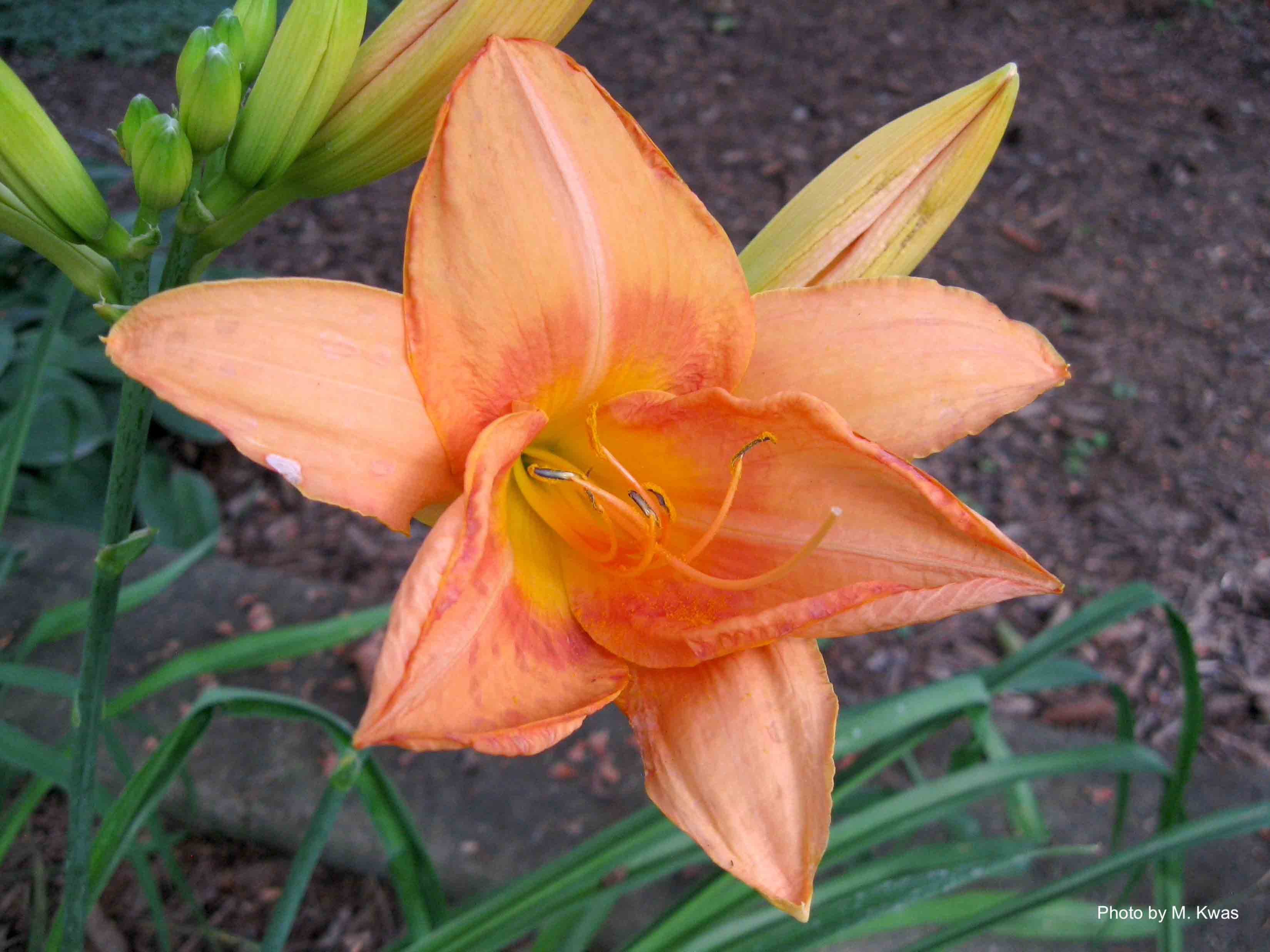
Hemerocallis "Pizza"
This seedling was named “Pizza” by the Beal Garden staff. The term “seedling” is used to refer to unregistered daylily cultivars and they are often highly prized. Beal Garden acquired “Pizza” and five more seedlings during a trip to the Goldners’ home in August 2003. Our staff named and accessioned all of these plants so we can track their progress in Beal Botanical Garden. This bold russet and orange daylily is a late-bloomer. It stands about 71 cm (28 inches) tall, with flowers 15 cm (6 inches) in diameter.
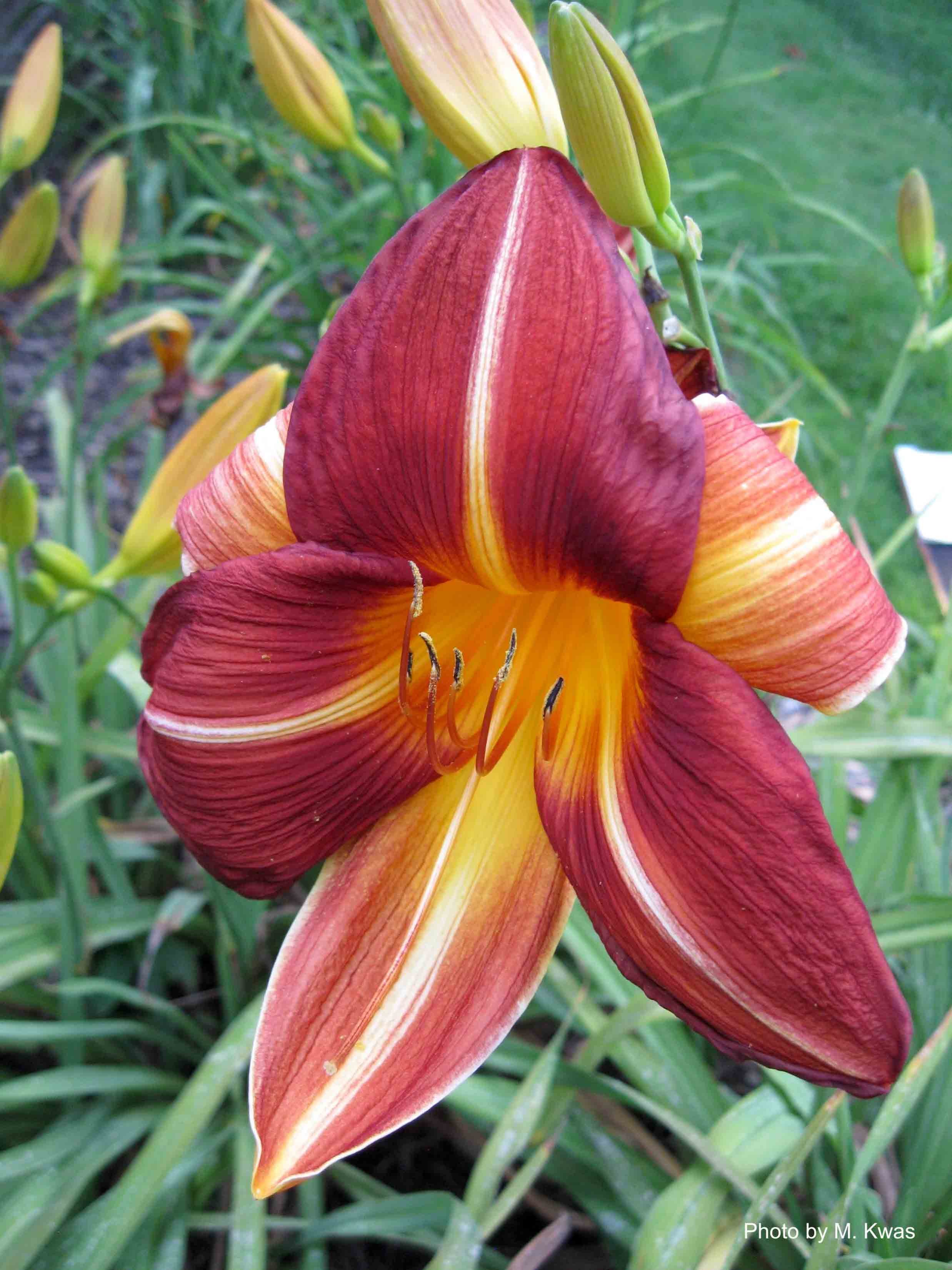
Hemerocallis "Rich Uncle"
The flowers of this mid-late season bloomer, 15 cm (6 inches) in diameter, are red-orange with a radiating golden yellow eye. At Beal Garden, it grows about 92 cm (36 inches) tall. This cultivar was named by Goldner’s grandson, Brandon Buyaki, and is similar to Bullfighter, which is also displayed in this bed.
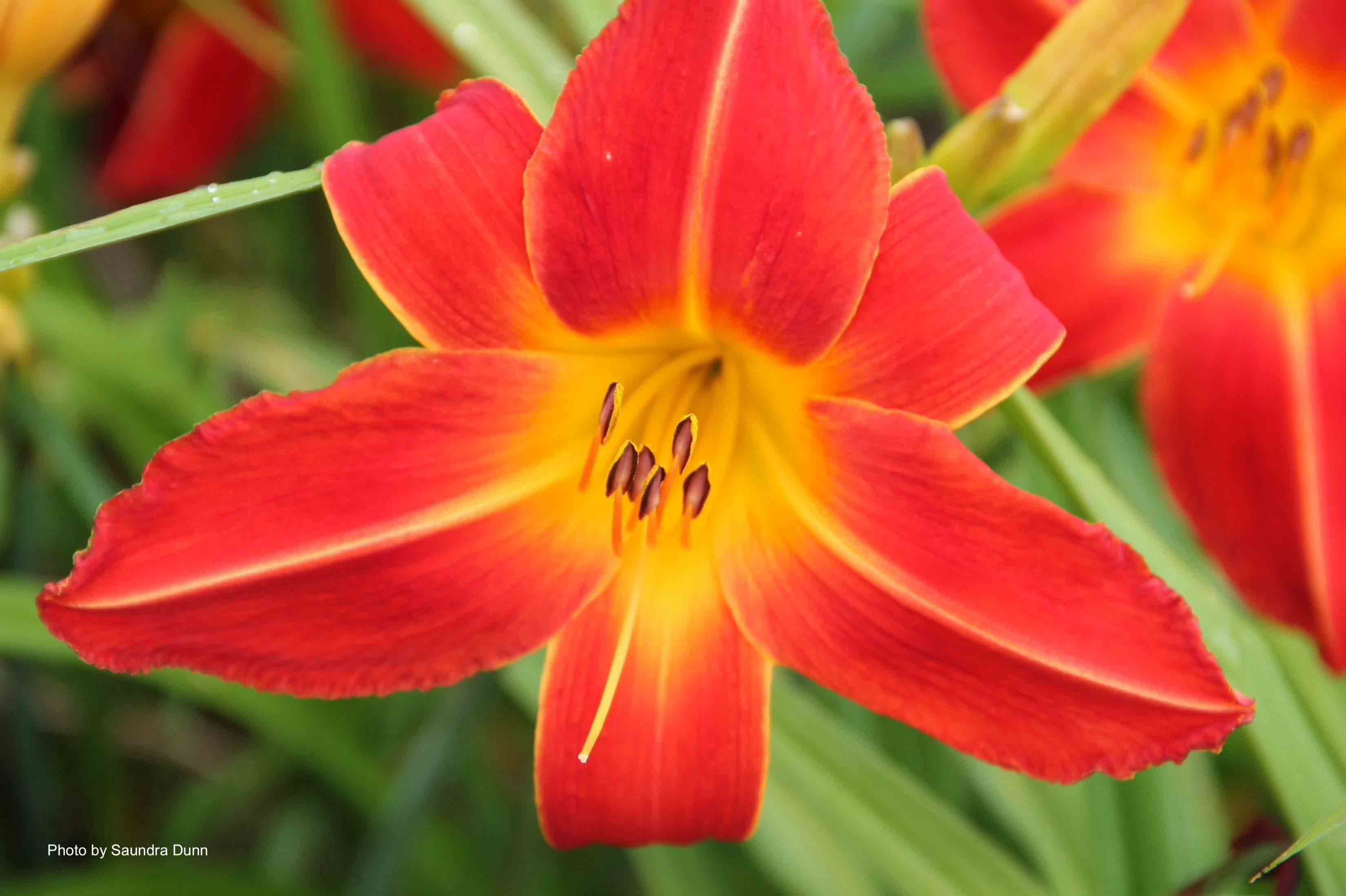
Hemerocallis "Sears Tower" (Goldner, 2000; tetraploid)
Standing roughly 2 m (6 feet) tall, Sears Tower is probably Al Goldner's best known cultivar. He described the color of the 18 cm (7 inch) flower as a "yellow polychrome." A number of daylily hybridizers have used "Sears Tower" in their breeding programs.
2007 AHS Honorable Mention Award Winner
Registered with the American Daylily Society in 2000 (Goldner)
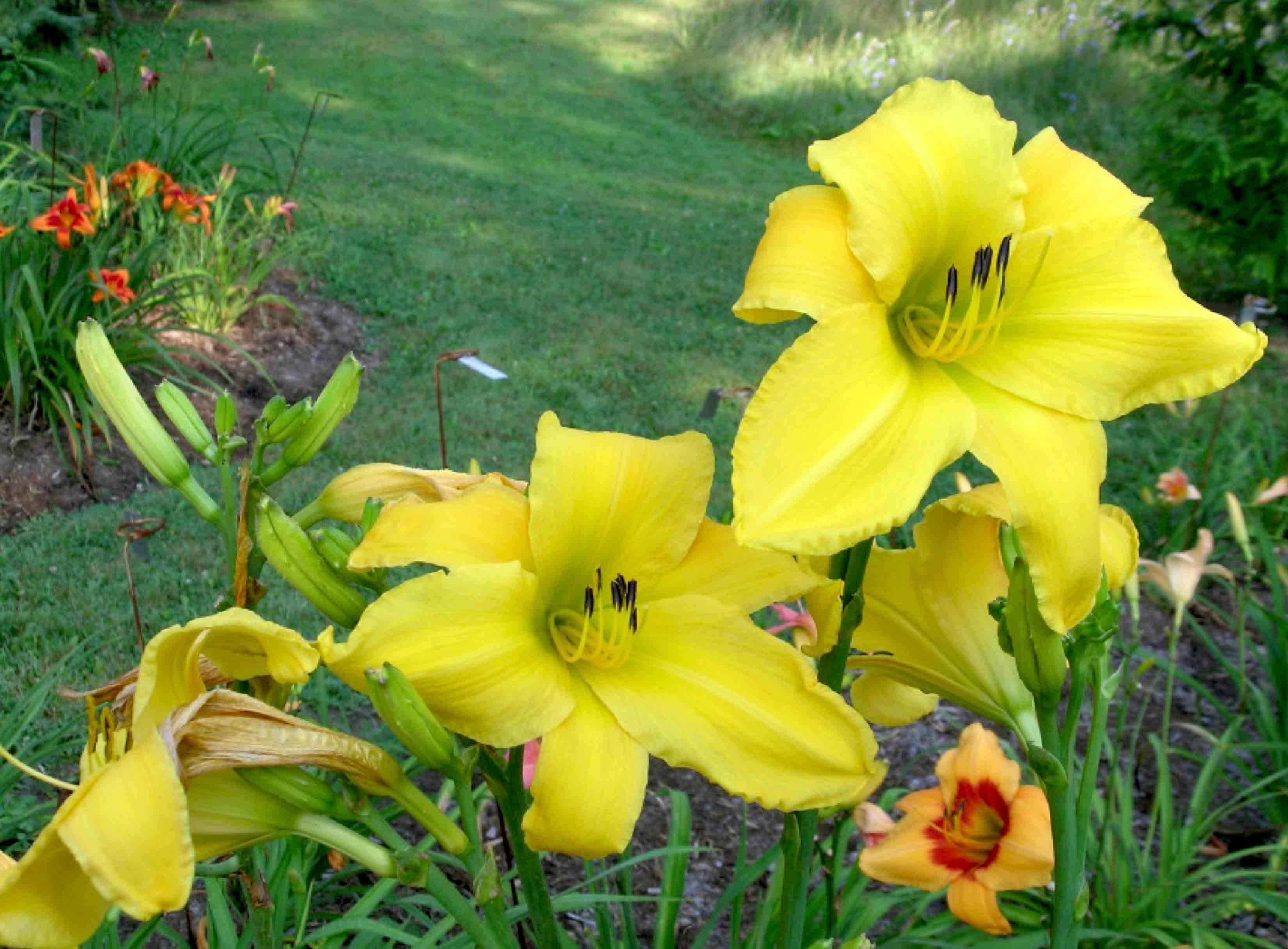
Hemerocallis "Tall Wine"
This Goldner cultivar produces a wine-red flower with a thin cream edge and a dark red eye. The throat grades in color from yellow to green, and the 15 cm (6 inch) flowers are borne on 76 cm (30-inch) scapes.
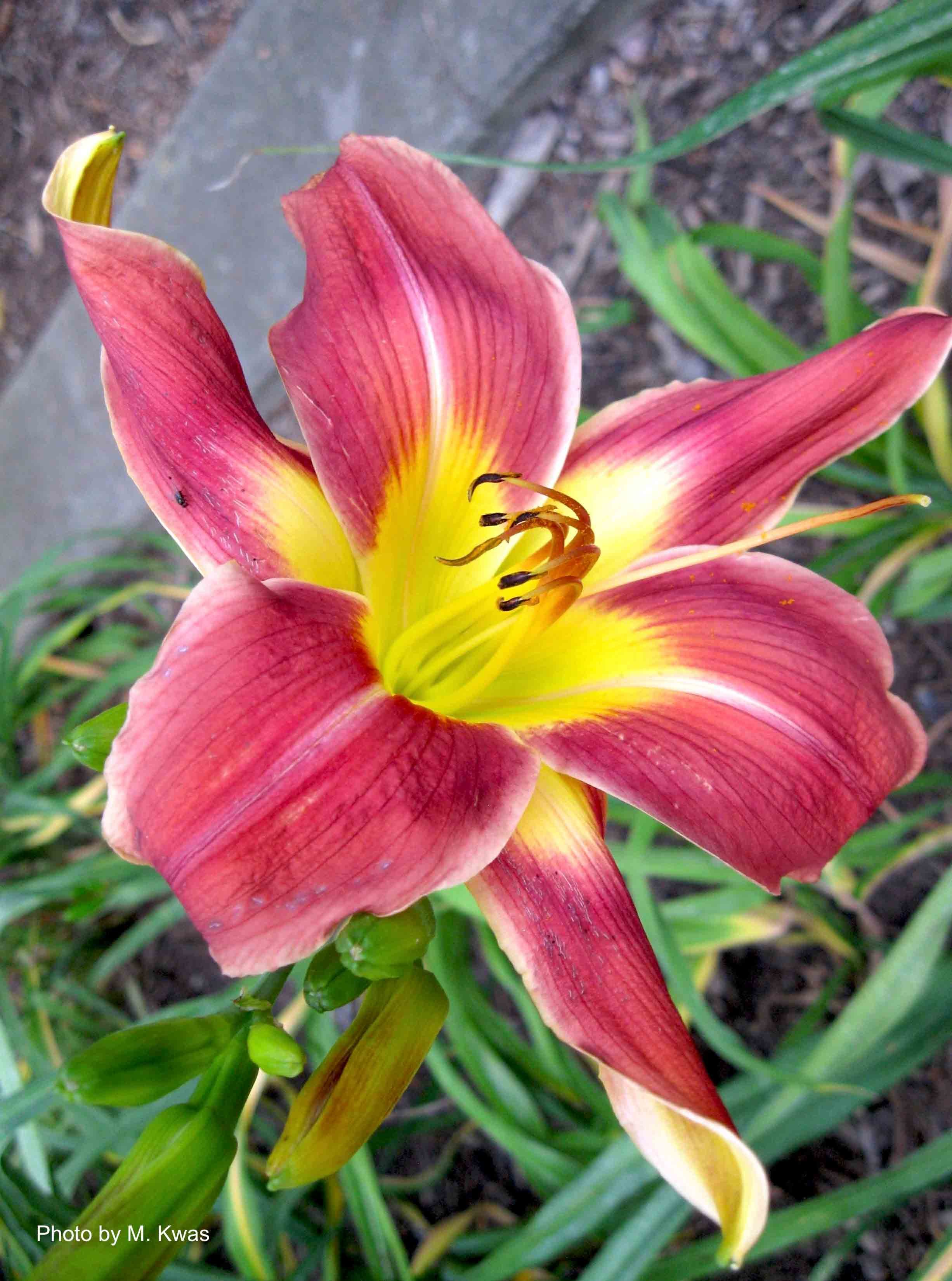
Hemerocallis "Telegraph Lavender"
Unlike most of Goldner’s plants, this cultivar is an early mid-season bloomer. In Beal Botanical Garden, it typically begins to bloom the first week of July. It has large (15-cm, 6-inch), light lavender flowers with a yellow-green throat that are carried on tall (1.2-m, 48-inch), strong stems. The name likely harkens back to the fact that Mr. Goldner lived on Telegraph Road in Bloomfield Hills, Michigan.

Hemerocallis "Tiny Yellow Spider"
This cultivar produces small (7.5-10 cm, 3-4 inch), medium-yellow flowers that are borne on 71-96.5 cm (28-38 inch) scapes. It is not a true spider-type flower, as the ratio of petal length to width is only 3:1, not 4:1. At Beal Garden, "Tiny Yellow Spider" is one of the earliest Goldner daylilies to bloom, starting in late June, and has a long bloom season.

Hemerocallis "To Go With Sears Tower"
This striking, red-flowered plant is similar in height and bloom time to Sears Tower. Al Goldner envisioned marketing it with Sears Tower so gardeners would be unable to resist purchasing one plant without the other. There is a similar story with his marketing plans for "Tiny Yellow Spider" to be grown and sold with "Sears Tower." Al never provided a name for this cultivar, so Beal Garden staff gave it the descriptive name above.
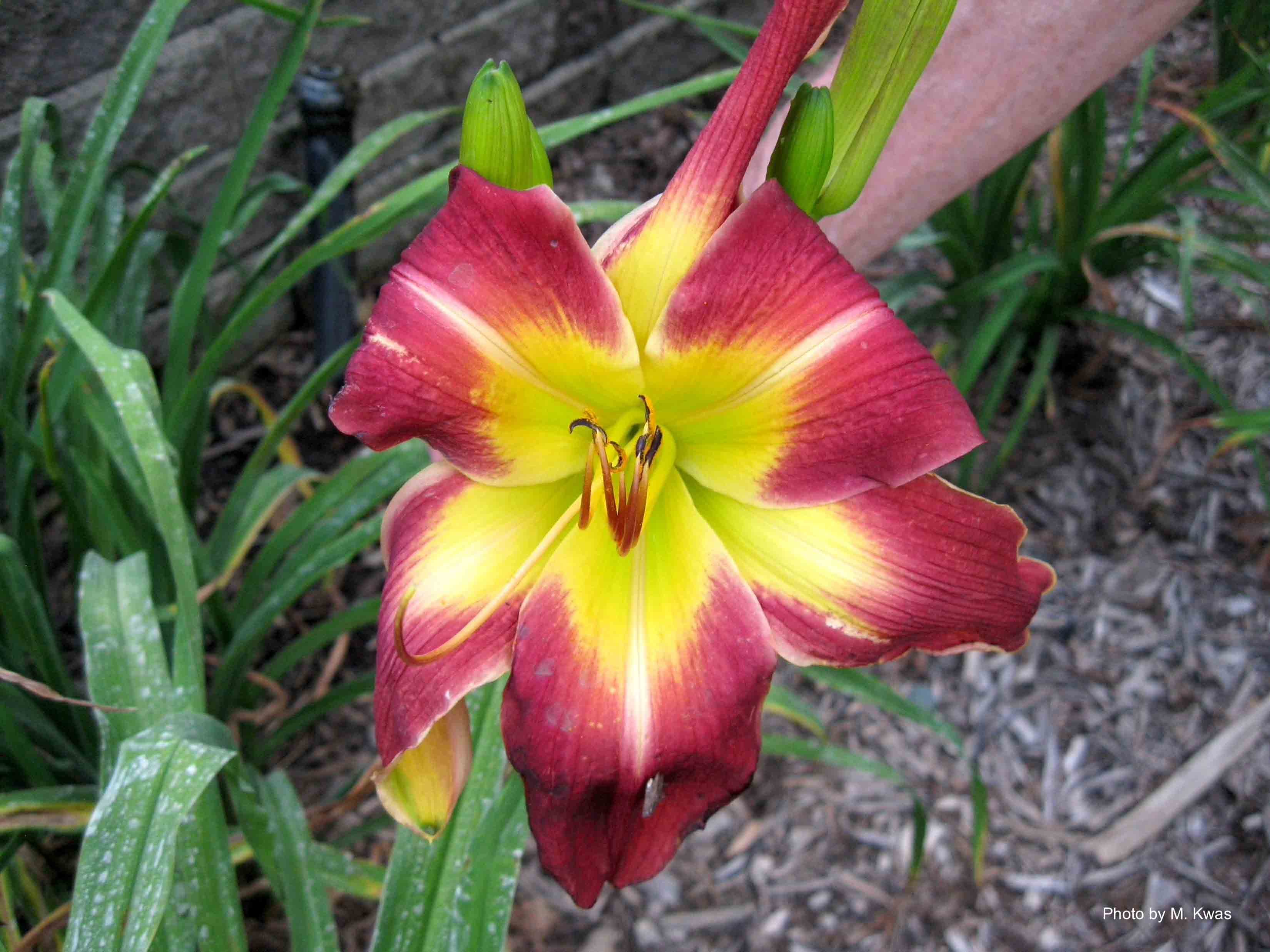
Hemerocallis "Xmas Mantle"
May also be known by the cultivar name "Christmas Mantle."
This is one of 20 cultivars that Goldner-Walsh donated to the Beal Botanical Garden in November 2005. It is hard to fathom why Goldner gave this plant its name, because there is nothing "Christmasy" about its appearance. The 18-cm (7-inch) flowers are primarily the color of cocoa and have a yellow-orange throat. The petals are edged in white. At Beal Garden, "Xmas Mantle" begins to bloom in late July.
